PARALLELS BETWEEN EARLY ANTI-CHRISTIANS
AND
MODERN ANTI-MORMONS
CR DT 1990, REVISED JUNE 1996, December 1999, Updates 2010
INTRODUCTION
DEFINITIONS AND CLARIFICATIONS OF IDENTITIES IN TITLE:
1. Early Saints: Members of the primitive Church.
2. Latter-day Saints: Those who accept the restoration of the primitive church, and who are members of The Church of Jesus Christ of Latter-day Saints.
Early anti-Christians began to call Christ's disciples "Christians" first in Antioch (Acts 11:26); while the earliest followers of Christ called themselves saints. Thus, the name "Christians" was first given to the early saints by their enemies and by outsiders. However, in time, the early saints began to call themselves Christians too. In later Christendom, after certain Christians died, they were eventually canonized as saints because they were regarded with respect, glory, and honor over regular members of the church. In modern times, members of the restored church now call themselves The Church of Jesus Christ of Latter-day Saints. However, the reader shouldn't consider the use of the title saint as meaning the same thing when used by members of the restored church. But rather, as being closer to the original meaning, which was, to identify the general membership in the church. Also, modern members are never canonized as saints after they die. The title includes Latter-day Saints in order to distinguish the early saints from the modern saints, and to clarify the time frames and dispensations into which they were born into.
During the 19th century, outsiders and enemies called the Latter-day Saints, Mormonites because of their beliefs in The Book of Mormon. Eventually, the name Mormon church was popularized by both critics and the members themselves, one reason was because it was a shorter title. However, the official name of the Mormon church is now The Church of Jesus Christ of Latter-day Saints.
3. Ancient anti-Christs:
a. Early anti-Christians consisted of different groups from different nations, such as some among the Jews, Greeks, Romans, and others.
b. Church members who apostatized; perverted and counterfeited Christ's, and the apostles' teachings, rituals, and practices; and who eventually set up their own rival sects.
c. Those who acted like they were members, but were in fact spying on the church in order to inform other early anti-Christians about what Jesus and his followers were doing.
d. Numerous evil and crafty individuals who were conspiring to destroy the church.
e. Those who refused to repent and live Christ teachings; plus those who rebelled against the prophets of their day by followed satan's teachings.
4. Modern anti-Christs:
a. Those who know of Christ's teachings but who don't live up to them, or practice them.
b. Those who teach others not to keep his commandments and teachings; who willingly reject Christ's commandments; refuse to repent; or who apostatize and rebel against God.
c. Those in the modern Christian churches who one can discern have a negative spirit of hatred towards others. d. Those who knowingly use dishonest means and tactics to fight against the church, and knowingly deceive others.
e. Those with in the restored church who are conspiring and fighting against the church and its teachings.
f. Outsiders and apostates who use every evil and dishonest means possible to spread lies, hate, and a negative spirit against the Church.
To further clarify:
There are numerous individuals among the modern Christian sects who live a Christ like life, and who reach out with a spirit of love and kindness towards all people. These types of people are not to be considered as being anti-Christs. However, there may be a number of these types of people who have been deceived by modern anti-Mormon propaganda, thus, they pass on what they believe is the truth about Mormonism to others. Even in these cases, despite this, I would not consider such a one an modern anti-Christ because they are living a Christ like life. I have talked with many different people from different Christian sects who I discerned were good people. However, they had been deceived by anti-Mormon propaganda. On the other hand, there have been different ones who have such a negative spirit about them that it seems that they were of the spirit of the anti-Christ, even though they claimed to be Christians.
Two types of restorations?
The primitive Christian church and its gospel was restored by the prophet Joseph Smith Jr. He was born December 23, 1805, & suffered martyrdom on June 27, 1844. As the Gods of heavens were bringing about a restoration through modern prophets; satan was also at work restoring the same types of anti-Christ tactics which he had inspired his primitive anti-Christs with to attack the primitive church.
From 1820 to the present day, numerous critics have attacked virtually every Latter-day Saint (here after as LDS) doctrine & practice, public & private. They have declared their opposition against the prophets & the church by word of mouth; & by publishing thousands of pamphlets, books, papers, tapes, & movies. They have held meetings, radio shows, and demonstrations outside different church events.
Too often many religionists misinterpret, misunderstand and are deceived about what others believe because of the smear tactics of critics; disinformation in the media; false rumors; and our own pre-conceived notions. However, as one gains further knowledge and understanding about what others' believe, these earlier notions are often corrected.
Christians throughout the centuries have faced many attacks from their opponents, & for every anti-Christian argument there are numerous Christian rebuttals. They have been quick to point out flaws in their critics' arguments, tactics & conclusions. It is an interesting study to parallel early anti-Christian attacks with those now made against Mormonism. While it is interesting, it is also peculiar. Those who most vigorously attack Mormonism with these arguments are the very Christians today who so adamantly denounce these arguments when directed against their own faith. If they attempt to disprove Mormon claims with anti-Christian arguments it would seem that they should quickly concede when a Mormon rebuts their argument with the same rebuttal they use against their critics. Following are some examples of ancient anti-Christian arguments now found within the repertoire of modern anti-Mormons.
Resistance, like in pumping iron in the gym, is sometimes painful, but it will eventually make you stronger. Looking back, I believe I can pin point the situation that started me to research numerous subjects. On Sunday, May 3, 1981, and while of a LDS Mission in California; my testimony was challenged more than ever before by an apostate. Later, he sent my companion a big thick red book with the Salt Lake Temple on it. The book was by Jerald and Sandra Tanners, entitled Mormonism: Shadow or Reality? Though I have had different ones challenge my testimony before this, I had not yet been exposed to a lot of real strong anti-Mormon literature. And so it was a real test of faith to hear the different charges and claims which I began to be exposed to from all sides. After that first real encounter, plus many others, I began to collect different historical items of interest. This book is the results of those encounters, during this on going quest to turn weak areas into strengths.
- 1. Three Gods, or many gods
- 2. Only be one God
- 3. God became man
- 4. Grace and works
- 5. Brothers fought in heaven
- 6. Creation drama
- 7. Literal resurrection
- 8. Christ's descent into hell
- 9. Rituals for the dead
- 10. "Magical" garments
- 11. Secret rituals & meetings
- 12. Symbols & hand clasps
- 13. Initiation rites
- 14. Three degrees of glory
- 15. Perfection
- 16. Deification
- 17. Prophets in other nations
- 18. Christ's world-wide trek
- 19. Homeless wanderers
- 20. Flour in their mysteries
- 21. Borrowed mysteries
- 22. Borrowed religions
- 23. No witnesses to events
- 24. Witnesses betray leaders
- 25. Magic rites & ceremonies
- 26. Misinterpreted symbols
- 27. Miracles were magical
- 28. Burned anti books
- 29. Called a cult
- 30. Revolutionists
- 31. Conspiratorial oaths
- 32. Leaders demonic
- 33. God destroys unbelievers
- 34. False rumors & stories
- 35. Leaders were impostors
- 36. Robbers, & murderers
- 37. God had sex with Mary
- 38. Magical incantations
- 39. Human sacrifices
- 40. Magical names
- 41. Magical stones
- 42. No evidences, no proofs
- 43. Contradictions
- 44. Changed doctrines
- 45. Deletions from history
- 46. Took out negative things
- 47. Members have to pay money
- 48. Suffer & die for cause
- 49. Citing their own books
- 50. Rumors, & forgeries
- 51. Rejected evidences
- 52. Evidences against them
- 53. False prophecies
- 54. Blamed for problems
- 55. Myths derived from pagans
- 56. Leaders were arrested
- 57. Made the good sound bad
- 58. Animal sacrifices
- 59. Drunkards
- 60. Doctrines harm families
- 61. And destroyed families
- 62. No originality
- 63. Family problems
- 64. Likened to swarming bats
- 65. Hired to do magic tricks
- 66. Best people
- 67. Unscientific lore
- 68. Like Greek myths
- 69. Embarrassing theology
- 70. Straw man approach
- 71. Used unofficial quotes
- 72. Break off sects
- 73. Distorted scriptures
- 74. Used double standards
- 75. Subliminal messages
- 76. Literalized symbolism
- 77. Good wrestlers
- 78. Used fake Ph.D. degrees
- 79. Visited by ghosts
- 80. Presented negative things
- 81. Out of context
- 82. Sins typical of them
- 83. Word game & misused names
- 84. Escaped justice
- 85. Joined other sects
- 86. Casted out devils
- 87. Brother or Sister
- 88. Different versions
- 89. God changed his mind
- 90. Relics
- 91. Don't need prophets
- 92. Adam-God theory
- 93. Blacks and the priesthood
- 94. Christ's second coming
- 95. Polygamy
- 96. Self defense
- 97. Blood atonement
- 98. Strange quotes
- 99. Massacre enemies
- 100. Rejected restoration
INTRODUCTION:
The study of ancient polemics reminds us of many modern battles with the pen. However, now days it's not with just the pen only, but rather, many modern inventions have made it possible for many polemical issues to be bashed back and forth at a much faster rate than ever before. Radio, T.V., telephones, computers and the Internet have all made it possible for modern polemics to be heard and seen by thousands of people all at once, and all over the world.
SOME OF THE ANCIENT ISSUES:
To understand how the early Christians' responses could be answers to modern issues, we need to considered the doctrines that they used in their own responses. Some of these are as follows:
1. The Pre-existence.
2. Christ preached the gospel in the spirit world.
3. Christ's world wide trek.
4. Deification and perfection in the after life.
5. The spiritual gifts.
THE PRE-EXISTENCE
ANCIENT POLEMICAL ISSUE #1:
1. Christianity is not of ancient origin.
2. What about the millions of souls prior to the time of Christ? How will they be saved?
3. Why was Christ sent down from heaven into just one corner of the earth?
4. Christianity derives its mysteries and doctrines from pre-Christian paganisms' mythologies, and mysteries.
EARLY CHRISTIAN ANSWERS:
1. Christianity is of ancient origin because Christ and his gospel pre-existed before the creation of the world.
2. Christ was the divine Spirit that had appeared and talked to Adam and all the prophets from the beginning. And because the gospel was preached from the beginning through angelic messengers, and prophets in all lands; millions of souls before the time of Christ's birth were saved too.
3. Christ came down from heaven to be born into one corner of the earth in order to fulfill prophecies. However, if the critics want to see numerous "Christs" throughout the world, they should have noted the prophets that were sent into all the world to represent Christ.
4. Christianity didn't borrow from the pagans' mythologies and mysteries, for it was the other way around. Why are there similarities between the Christians and the pagans? It's because the fallen angels counterfeit the gospel after they hear it being preached by the true prophets of God in the different nations.
GOSPEL PREACHED TO SPIRITS IN PRISON
ANCIENT POLEMICAL ISSUE #2:
1. Do you Christians really believe that Christ descended into the infernal regions in order to convert souls there too?
2. If so, this doctrine is an absurd apology which you invented, and are deceived by.
3. Noting parallels between pagan versions of the descent and that of the Christians; one critic suggests that the Christians' versions were borrowed from the pagans.
EARLY CHRISTIAN ANSWERS:
1. Yes, Christians do believe in this doctrine. Christ had great success there too. (This doctrine also helped them answer the ancient issues as to how the millions of souls who lived and died before the time of Christ could get a fair chance to hear the gospel and be saved too).
2. And because Christ and his servants did preach the gospel there, numerous souls accepted it. Thus, they were set free from the spirit prison house and ascended into paradise.
3. If Christ's gospel had pre-existed even before his birth in the flesh, and even before the creation of the world. Then this doctrine, (the descent), wouldn't have been borrowed (from paganism) by early Christians either. But rather, the parallels to it in paganism would suggest that it had been borrowed from the prophets, perverted and legendized by the pagans. Besides, this doctrine was predicted by certain prophets before the time of Christ, but it had also been removed from some the critic's manuscripts.
CHRIST'S WORLD WIDE TREK
ANCIENT POLEMICAL ISSUE #3:
1. The pagans' gods have extended the boundaries of their kingdoms beyond the seas and path ways of the sun; whereas the Christians' god couldn't have because he can't even save them from their persecutors in this life.
2. Christians believe God only speaks to them alone and doesn't care about other nations.
3. Christians believe that they alone will be saved while everyone else will be roasted.
EARLY CHRISTIAN ANSWERS:
1. Christ showed is superiority over all rulers by entering into their several provinces, and summoning men out of them to be subject to himself. Also, Christ enter into numerous nations and islands of the sea, many of which are unknown to us, but known to him. Upon entering these nations, he extended the boundaries of his kingdom far beyond what any earthly king or ruler could do. In these different areas of the world to which Christ went to, are the people of Christ. He knows them, and they know of him and worship him as King of Kings, and Lord of Lords.
2. Christians don't believe that God only speaks to them alone, for he spoke to many other nations of the world through prophets. Thus, he loves and cares about other nations too. For Christ not only descended into hades to preach the gospel, but he also went to all the earth in order that people could be saved where ever they were.
3. Thus, many others besides the Christians get to escape the fire for these same reasons.
DEIFICATION & PERFECTION
ANCIENT POLEMICAL ISSUE #4:
1. Christians teach that they will become perfect.
2. In the resurrection, dead bodies will rise up.
3. Deification is an old worn out myth.
4. After having created the heavens and the earth, why did Christ come down into the body of a man in order to work with wood? And why did he pick such a weak human body to live out his life in such a low ranked manner? Was it to see what was happening here?
EARLY CHRISTIAN ANSWERS:
1. Christians do teach that they can become perfect in the after life.
2. The body will be changed, glorified, and perfected in the resurrection.
3. The versions of deification in mythologies were correct concepts which the pagan nations had retained, though in apostate form.
4. Why did Christ become a man? To show us how to become Gods.
THE SPIRITUAL GIFTS
ANCIENT POLEMICAL ISSUE #5:
1. The miracles of the Christians are magical tricks.
2. Their miracle stories are borrowed from pagan mythology.
EARLY CHRISTIAN ANSWERS:
1. Because Moses was believed to have been a magician, according to the Egyptians; then you Jews ought to first give us the reasons why you believe that he was a true prophet. Then we Christians will tell you why we believe him to be, and our own prophets as true prophets too.
2. The miracles were not borrowed from similar stories in paganism, but rather, they were brought about by the powers of God. The spiritual gifts which the Jews once had have now passed on to the Christians.
SOME LOGICAL QUESTIONS:
Many 20th century Christians believe in many, while others in just some aspects of the pre-existence story and doctrine. Most of them still accept the following aspects:
1. The pre-existence of Christ as a spirit before his birth.
2. The war in heaven.
3. Satan and his angels fall from heaven.
Many others now reject many of the following aspects:
1. The pre-existence of the human family as spirits before mortal life.
2. The council in heaven.
3. Pre-ordination in which the prophets were chosen to be prophet on earth before they were born.
4. The souls return to glory and deification. (This was an early Christian concept that brought the doctrine of the pre-existence together with the doctrine of deification).
5. The pre-existing Christ visiting and talking with his prophets in different nations around the world.
6. The gospel had pre-existed before the Christian era. For it had been revealed by true prophets, but was also counterfeited by the fallen angels who heard these prophets in the different nations.
HAS MODERN CHRISTENDOM LOST ITS SHIELD?
With these basic elements missing, a number of issues seem to be almost unanswerable. Thus, the following ancient arguments, with modern parallel arguments seem to have a stronger blow without this earlier Christian shield:
1. If the human family didn't pre-exist as spirits before mortal life, why were we created? What is the purpose of life? Does theory of evolution then provide a better answer when explaining the origins of the human family then?
2. If there was no council in heaven, what was God doing with his angels throughout all eternity before the creation of the world? Did he ever talk with them about what his plans were?
3. If there was no pre-ordination, what is deja vu? (Where we seem to remember seeing a place or person before, even though we know that we have never been there).
4. If the pre-existing Christ didn't visit and talk with his prophets in the different nations around the world; (because there were no other prophets beside the Hebrew and Christian prophets):
A. Did God neglect these other nations then?
B. Evidence suggest that the devil & his demons have gone forth into all the world in times past, as in the present. And if this is so, why couldn't Christ have sent forth his angelic messengers, guardian angels, missionaries, prophets, and had gone himself in order to combat the forces of evil? And to preach the gospel everywhere?1
Surely Christ, prophets, & angelic messengers could have done a lot better job of witnessing for the existence of God the Father, than through nature.
Some modern Christians say that nature, or God's creations witnessed to God's existence. Thus, the different people of the nations who didn't get a chance to hear about Christ could have come to know of God's existence, etc., through nature.
6. If the gospel had not pre-existed before the Christian era. And had not been revealed by true prophets in the different nations; (because there was no prophets in other lands beside in the old world):
A. Then why would God have allowed the demons to set up barbaric versions of the gospel throughout the world?
B. Did God neglect these other parts of the world? Julian the Apostate, [361-63 C.E.], asked the early Christians: Why had God sent prophets to the Jewish nation, but to no others? For no prophets, "no oil of anointing, no teachers, no herald to announce his love for man which should one day, though late, reach even unto us also?... If he is God of all of us alike, and the creator of all, why did he neglect us?"2 Was Julian right? Had God neglected the rest of the humanity?
C. Didn't he care about, or love the millions of souls who lived and died without a knowledge of Christ or his gospel?
D. How would the people before the time of Christ "get saved" if all one has to do is accept Christ before one dies?
Christ's descent:
If modern Christians were to reject the early Christian doctrine of Christ's descent, then the earlier anti-Christian questions need to be answered again.
1. Does God's justice & mercy only extend to those lucky enough to have been able to hear the gospel?
2. Would the early anti-Christians be right when they said that the Christians' God neglected the human race before Christ's birth?
In modern times, a number of people have wondered about this issue too, and it seems that the best answer to these questions are still the early Christian responses.
Logic demands that we consider other answers besides those which we have been given by modern Christians. For if Christ didn't go to other nations, then the reasons why it seems that he would or should have gone would have to become reason why he didn't. These reasons are as follows:
1. Christ didn't atone for the sins of the whole world, but rather, just certain portions only. For if he did, what was the point of a world wide atonement? If, that is, only certain ones who happened to have been born in the areas where Christendom was known, would get saved because they got a chance to accept him?
2. Christ didn't have any knowledge of far away countries, while satan did.
3. Christ was restricted to just a certain area of the world, where as satan could go where ever he wished.3
4. Christ wasn't merciful, just, & fair. It was just their tough luck to have been born in times & areas of the world where they wouldn't get a fair chance to hear about Christ & his gospel.
5. They didn't need to be saved!
6. They didn't need God or Christ any more, or at all, for they were able to find their own way in the dark.
7. Christ didn't have the power to go to other nations before he was born. It was just too far for him to travel to.4
8. Christ couldn't do any better than the earthly Kings who couldn't extend their power & the boundaries of their Kingdoms beyond the confines of their own particular Kingdoms. Tertullian wrong when he said that Christ could & did do such a thing?5
9. Christ didn't go to other nations before his birth because the 3rd century early anti-Christian Porphyry was right when he said that: Christ had hid himself for ages before appearing among humankind. Therefore the early Christians' God could not be the way, and the truth and the life, in which men and women could have only had access to God, since the time of Christ's appearing in the flesh. Therefore, early and modern Christianity "excludes those who have gone before and those who have no knowledge of Jesus of Nazareth."6
All these reasons that I have presented as being reasons why Christ didn't go to other nations, etc., are really some of the reasons why we should be willing to accept the earlier Christian doctrines that says he did go to other nations. And that he did send angels, and prophets throughout the world so that all nations could have a fair chance to hear and obey the gospel. And also that he did descend into the spirit prison house to preach the gospel and free the captive spirit there too.
Conclusion:
By accepting these earlier answers, that earlier shield comes up in place again in helping one deal with the same types of issues now raised by modern critics. Besides, it is my opinion that these earlier answers make more sense than many of the modern attempts at answering these same types of issues. Some sects, like the Mormons believe that these answers have been restored through a restoration of primitive Christianity. However, the strange thing is that they are not accepted by many modern Christians to be "Christians" because they accept these earlier beliefs! While still other writers have suggested, especially with the discovery of many ancient Christian documents, that it's time for another reformation!
BIBLIOGRAPHY AND ENDNOTES:
Early Christian Answers To Primitive Critics, How Their Responses Answer Modern Issues, by DaRell D. Thorpe,(From an unpublished research paper for a Special Studies Class, Humanities, Instructor: John Fritz, student: DaRell D. Thorpe, Summer 1996, Salt Lake City Community College, Redwood. August, 1996).
Anna D. Kartsonis, Anastasis (The Making of An Image), (Princeton, New Jersey: Princeton University Press, 1986).
Arthur Cushman McGiffert, A History of Christian Thought, (New York, & London: Charles Scribner's Sons, 1932, 1954).
Carl Nordenfalk, Early Medieval Book Illumination, (New York: Skira Rizzoli, 1957 & 1988).
Carl Van Treeck and Aloysius Croft, M.A., Symbols in the Church, 1936.
DaRell D. Thorpe's unpublished manuscripts and files (1986--1996):
1. Jesus Christ's "Everlasting Gospel" and Ancient "Patternism"
2. Early Christianity In Ancient America and Old and New World Parallels.
3. The Pilgrimage and Struggles of the Human Family In and Through the Different Realms of Existences.
4. The Pre-Existence: Our Pre-earth Life as Spirits in a Family in Heaven.
5. Upon Them Hath The Light Shined (Christ preaching the gospel to the Spirits in prison and baptism for the dead).
6. The Christ In Santa Unmasked (Historical evidence that Christ went to other nations).
7. Christ's Pilgrimage Unto the Ends of the Earth (Further and more detail evidence from around the world, and from numerous nations' legends and writings).
8. "Ye Are Gods... Children of the Most High", Historical evidence for the doctrine of Perfection and deification.
Geoffrey Barraclough, The Christian World, (London, England: Thames & Hudson, 1981).
George Rainbird, The Book of Art, (London, England: Grolier, 1965).
G.W. Butterworth, Origen On First Principles, (Gloucester, Mass.: Peter Smith 1973, & Harper & Row, 1966).
Hanns Swarzenski, Monuments Of Romanesque Art, (The Art of Church Treasures in North-Western Europe), (The University of Chicago Press, 1954 and 2nd, Edition, 1967).
Henry Bettenson, The Early Christian Fathers, (Oxford, England: Oxford University Press, 1956).
JCJ Metford, Dictionary of Christian Lore and Legend, (London, England: Thames and Hudson, 1983).
Jeffery Burton Russell:
1- Satan (The Early Christian Tradition).
2. Lucifer, (The Devil In the Middle Ages).
3- The Prince of Darkness, (Radical Evil and the Power of Good in History), (Ithaca, New York: Cornell University Press, 1988).
Joseph Wilson Trigg, Origen (The Bible and Philosophy in the Third-century Church), (Atlanta: 1946, 1952, 1971, 1973, & John Knox Press, 1983).
John P. Lundy, Monumental Christianity (Or the Art and Symbolism of the Primitive Church), (New York: J W Bouton, 1875 & 1882).
J. P. Migne, Patrologiae Cursus Completus; Series Latina, 221 volumes; (Paris: 1844-1864).
Patrologia Cursus Completus, Series Graeca (Paris: 1857-1866, 161 volumes).
Michael Batterberry, Art of the Early Renaissance, (Milan Italy: Fratelli Fabbri, Ed., 1968).
Nigel Morgan, Early Gothic Manuscripts (II) 1250-1285, 1988.
Paul Carus, Dr., The History Of The Devil And The Idea Of Evil, (From the earliest times to the present), (La Salle: Open Court).
R. Joseph Hoffmann, (translator) Celsus On The True Doctrine, (A Discourse Against the early Christians), (Oxford: Oxford University Press, 1987).
R. G. Hamerton-Kelly, (Professor of the New Testament McCormick Theological Seminary, Chicago), Society for New Testament Studies Monograph Series 21, Pre-Existence, Wisdom And The Son of Man, A Study of the Idea of Pre-existence in the New Testament, (Cambridge University Press; Cambridge, Great Britain, 1973).
Richard Marks and Nigel Morgan, The Golden Age of English Manuscript Painting (1200-1500), (George Braziller, New York, 1981).
Robert Louis Wilken, The Christians As The Romans Saw Them, (Yale University Press; New Haven and London, 1984).
Roland H. Bainton:
1- The Horizon History of Christianity, (English Edition, 1964, American Heritage).
2- Behold the Christ, (1974).
W.H.C. Frend, 1967, Martyrdom & Persecution in the Early Church.
William G.T. Shedd, D.D., A History of Christian Doctrine, (New York: Charles Scribner's Sons), 3rd edition, 1883, Volume 2.
Yves Bonnefoy, Mythologies, (A Restructured Translation of Dictionnaire des mythologies et des religions des societes traditionnelles et du monde antique). Prepared under the direction of Wendy Doniger. Translated by Gerald Honigsblum, etc., (The University of Chicago Press, Chicago & London, 1991).
Reader's Digest, After Jesus, (The Triumph of Christianity), 1992.
A Library of Fathers of the Holy Catholic Church, (John Henry Parker, J. G. F. & J., Oxford: Rivington, London, MDCCCXL, MDCCCXXXIX).
The Ante-Nicene Fathers = TANF: a set of volumes on the writings of the early Christians before the Nicene Creed era of 325 AD. "The Writings of the Fathers down to A.D. 325". (Grand Rapids, Michigan: T & T Clark, Edinburgh, WM. B. Eerdmans Publishing, reprinted October 1989), nine volumes.
The Nicene and Post-Nicene Fathers, (Grand Rapids, Michigan: WM. B. Eerdmans, reprinted April 1986), 14 volumes.
END NOTES:
1- The angels are on every page of the Golden Legend, because they were so much in the thoughts of the people. They are particularly to be relied upon when the Devil makes his appearance, and the Devil is everywhere, and the author of every ill, great or small, that befalls a saint.... Everywhere he works his malign wiles, and everywhere he is vanquished by the saints and the angels." (The Golden Legend (Of Jacobus de Voragine), Translated and adapted from the Latin by Granger Ryan and Helmut Ripperger, 1941, Arno Press, A Pub. & Lib., service of The New York Times, N.Y., 1969, p. xi, of foreword).
2- Wilken, The Christians As The Romans Saw Them, p.181.
3- In 2 Chronicles 16:9, it suggests that God knows of other areas of the world. "For the eyes of the LORD run to and fro throughout the whole earth". Thus, the knowledge of other parts of the world could have been revealed to the prophets (Amos 3:7).
4- According Augustine the apostles could have been transported to the New World on the wings of angels. (Lafaye, Quetzalcoatl & Guadalupe, p. 44-45). 145-220, Tertullian wrote that: "Every spirit is possessed of wings. This is a common property of both angels and demons. So they are everywhere in a single moment; the whole world is as one place to them" (The Ante-Nicene Fathers, 3:36, Tertullian, Apology, chapter xxii; see also p.179; The Soul's Testimony, chapter vi).
5- The Ante-Nicene Fathers, 3:157-8; 4:175-6, & 179; Russell, Satan (The Early Christian Tradition), 118-122; Bainton, Behold the Christ, p.170, fig. 194. Christ rules over the whole world, "he is the governor among the nations," & also the universe. (Col.1:10-22; & Psa.22:25-28).
6- The Christians As The Romans Saw Them, Wilken, pp.162-3; After Jesus, Reader's Digest, pp.199-200.

THE POLEMICAL ISSUE:
Throughout history the human family has sought to discover the answers to such questions as:
1. Is there a God?
2. Is there more than one God?
3. What is God like?
4. What kind of a being is God?
5. What does he look like?
There are many other questions besides those mentioned here. The answers to these questions would differ one from another if we were to considered the opinions of many different faiths and religionists; however, the main focus here will be early to later Christianity.
The Scriptures present the Godhead as being separate individuals
The scriptures & early Christian history shows that from the earliest times, Christ was believed to have been one of the divine spirit Sons of God the Father in a family.1 A number of scriptures also present the Father and the Son as two separate beings. "It is also written in your law, that the testimony of two men is true. I am one that bear witness of myself, and the Father that sent me beareth witness of me."2
The scriptures also present Christ as having gained a body too.3 He had a body that was nailed to a cross, & a face that "they struck,"4 In fact, His shape, size, & image was in the form of a man. Thus, this became one of the reasons why some of the Jews rejected Him.5 Jesus also never claimed to be God the Father, but the Son of God.6 And the Father never says that he was the Son but rather that he was pleased at what his son was doing.7
Christ's body glorified in resurrection
Christ's body died, at which point his spirit went into the spirit world.8 Later, his spirit was reunited with his body that had been resurrected.9 When Mary went to touch Christ, Christ told her not to, for he had not gone to his and their Father in heaven yet. Again this suggests that they were two separate divine beings. One on earth talking with Mary, the other in heaven. Christ's resurrected body was glorified too.10
Christ still has His glorified perfected body of spirit and resurrected flesh and bones. "Knowing that Christ being raised from the dead dieth no more; death hath no more dominion over him."11 This "same Jesus, which is taken up from you into heaven, shall so come in like manner as ye have seen him go into heaven."12 Christ ascended with a body, and if the same Jesus was to return some time in the future, he will still have a body.13 "Now if Christ be preached that he rose from the dead, how say some among you that there is no resurrection from the dead?"14
 The meaning of one
The meaning of oneIf there is only one God, wouldn't all three have been born to Mary, and lived on this earth as they grew up in the body of a man called Jesus, and suffer in that body on the cross, and then eventually resurrected in that body?15 When Christ says that he is the Son of God, is that symbolic or literal? If symbolic, why would he have a literal mother but not a literal Father?
The ancient prophets and apostles were given in the early church to helped the early saints to obtain a knowledge God and Christ. When the spiritual gifts faded out of the church, apostate doctrines concerning the nature of God flooded in even more than before.16
The meaning of "one" presented in some passages might help us to understand what type of unity and purpose that the God head enjoys, for the scriptures speak of a group of many members becoming "one" so that they all could work together as one team, rather than against each other because of contentions and disunity. For example, Paul speaks symbolically of the "body" or church being made up of different members who have different gifts of the spirit, and different functions or tasks to perform in "the body" or Church. He then says that one part of the body shouldn't say to the other part that they are not needed. For they were all to work together as if one body or one Church instead of against each other.17
Some critics "refer to the shema: "Hear, O Israel, the Lord our God is one Lord" (Deuteronomy 6:4) to support their claim that their Trinity is one being. With the correct translation the Elohim as plural, and one as meaning united, the shema could actually read: "Hear, O Israel, the Gods are united." ...The Hebrew one in Deuteronomy 6:4 is echad meaning united... In the same way "man is become as one of us" (Genesis 3:22) does not make Adam one within the essence of God himself.... One as used in the shema is not yahid which corresponds with the Latin unicus. Where the Bible uses the word one in reference to God and Christ, the oneness is nothing more than a compound unity. For example, one cluster of grapes (Numbers 13:23) does not make all grapes in a cluster one comprehensive grape-- no more than one committee of persons make up one comprehensive person. Similarly, the Godhead, is composed of three separate beings who are united in purpose and glory."18
The Christian idea of universalism was not a new or even a biblical concept. The search for an ultimate "One" was present among the pre-Socratic Greek philosophers. Xenophanes [530 B.C.], for example, postulated that `There is one god, among gods and men the greatest, not at all like mortals in body or in mind.' This early Greek philosopher went on to define divine nature, and thus became the first philosopher to point the way toward a universalism that would fully flourish later in Christianity.
 The scriptures used by critics
The scriptures used by criticsSome modern Christians claim that Isaiah 43:10-12; 45:21-2, supports their claim that there is only one God and no other Gods, for God does not know of any besides Him.19 The historical situation in Isaiah's day shows us that the Lord was concerned with the how the people were forming idols as their "gods" rather than accepting the true saviour as their God.20 The makers of idols have no knowledge for they set up the wood of their graven image, and pray unto a god that cannot save.21 Isaiah 46:9 has been used too, however, the first verse talks about the idols of that time (Isaiah 46:1, 47:4).
Critics often cite "there is none beside me. I am the Lord, and there is none else."22 A closer look at these passages shows that the Lord was responding against the idolatry of that time.23
Some critics have claimed that God wouldn't restrict himself by taking upon himself a body. However, God the Father sent the Son to gain a body, so how did that body restrict Christ? One of the reasons why some people rejected Christ was because he looked like an ordinary looking man.24
Today, modern critics have used parts John 4:24 and Luke 24:39 to suggest that God does not have a body. However, in Luke 24 Christ shows some of his followers that he had a resurrected body. John 14:30 is interpreted by some as saying that Jesus is in the Father and the Father being a spirit, is in Jesus because 2 bodies cannot be crammed into one. Other critics have claimed that if Philip had seen Christ he also saw the Father, for they are one in each other. However, Philip saw the Father's image, likeness, & family resemblance in Christ.
Historically, and in some cases, the word "one" can also mean the same thing as unity, to agree in one, and one in purpose. Early to later 19th century publications are filled with hundreds of examples of this kind of symbolic terminology, which is not to be taken as being literal. We should keep this in mind when we see how some critics have attempted to misinterpret the Book of Mormon to fit into their 3 in 1 concept, such as in the cases with the testimony of the 3 witnesses to the Book of Mormon. Alma 11:26-31 has also been misinterpreted too.
Alma was Amulek's missionary companion and teacher, for earlier, he had been one of king Noah's priests who had heard Abinadi's prophetic defense before the king. Noah's wicked priests had asked Abinadi for the meaning to a certain passage from Isaiah. Alma attempted to defend the prophet Abinadi, but he was cast out for this, and fled for his life. Eventually, Alma repented and wrote down the words of Abinadi. (Mosiah 17:1-4). He heard some of the titles that Abinadi had given to Christ, as he expounded on the words of Isaiah, which must have been copied from a copy from the brass plates which Lehi and his family had obtained, and had brought with them across the sea to the americas from the Jerusalem area (1 Nephi chap. 5). Amulek had learned from Alma the words of Abinadi and Isaiah. For Alma had "tarried many days with Amulek" before they had gone out to preach.25 So it could be that Amulek was answering Zeezrom in the language and symbolical terminology & titles of the prophets.
Critics cite: "And Zeezrom said unto him: Thou sayest there is a true and living God? And Amulek said: Yea, there is a true and living God. Now Zeezrom said: Is there more than one God? And he answered, No."26
"And Zeezrom said again: Who is he that shall come? Is it the Son of God? And he said unto him, Yea."27 Amulek had said yes to two questions concerning God, and the Son of God who would be sent.
Who was Zeezrom? He was a man who was "expert in the devices of the devil," and a lawyer, for he had tried to snare Amulek with trick questions.28 Did Amulek contradict himself? No, for he knew that Christ would be sent from the Father, thus, there were two divine beings.
In some cases, both the Son and the Father have been called by the same title. Both are called the title of "God", or "Lord" or even "Father." For example, in this case were Christ is symbolically called "the very Eternal Father." In a question that was directed to Amulek by Zeezrom. Amulek answered and "said unto him: Yea, he is the very Eternal Father of heaven and of earth, and all things which in them are; he is the beginning and the end, the first and the last; And he shall come to redeem his people" (verses 39-40). Christ was named the title of "the very Eternal Father" in the same sort of way that George Washington is now considered the first President and the Father of the nation.
Abinadi said, while expounding on Isaiah: "I say unto you, this is not all. For O how beautiful upon the mountains are the feet of him that bringeth good tidings, that is the founder of peace, yea, even the Lord, who has redeemed his people; yea, him who has granted salvation unto his people".29
Isaiah had given many titles to Christ: "For unto us a child is born, unto us a Son is given: and the government shall be upon his shoulder: and his name shall be called Wonderful, Counseller, The mighty God, The everlasting Father, The Prince of Peace" (Isaiah 9:6). Abinadi had expounded on Isaiah's words, by saying that the Redeemer is the "founder of peace," while Isaiah had called Christ "the Prince of Peace" and "the everlasting Father." But is He the literal everlasting Father, in that He (Jesus) is His own God the Father? Of course not!
Abinadi also used the same title for Jesus, as Isaiah had earlier. Thus, Abinandi gives the title of "Father" to Christ, and towards the end of his testimony before Noah and the priests. He said: "Teach them that redemption cometh through Christ the Lord, who is the very Eternal Father" (Mosiah 16:15). Alma must have taught these titles to Amulek.
Very few sacred titles are used exclusively for one or the other. For example, "Who is the God of Abraham, Isaac, & Jacob?" We might think first of Jesus Christ since the Father delegated responsibility for this earth to Him.30 However, some of the other prophets have understood this and yet they have designated God the Father as the God of Abraham, Isaac, & Jacob.31 In other cases even angels speak as if they were Christ.32
Some confusion and misunderstandings have arisen from these types of situation because the prophets have called the different members of the Godhead by different titles, while in other cases they all have shared the same sorts of titles. Thus, some have misunderstood who the prophets had in mind. While the prophets themselves probably knew to whom they spoke, but the identity of the messengers may have become confused in translation or transcription of the original texts.
Another passage used by critics is where Abinadi said that "God himself shall come down among the children of men, and shall redeem his people. And because he dwelleth in flesh he shall be called the Son of God, and having subjected the flesh to will of the Father, being the Father and the Son-- The Father, because he was conceived by the power of God; and the Son, because of the flesh; thus becoming the Father and Son--And they are one God, yea, the very Eternal Father of heaven and of earth. And thus the flesh becoming subject to the Spirit, or the Son to the Father, being one God,...the will of the Son being swallowed up in the will of the Father. And thus God... giving the Son power to make intercession for the children of men." (Mosiah 15:1-5, 7-8).
Critics have ignored important parts in this passage that shows in what way the Father and Son are, in a symbolical way, "one", for it was through "the will of the Son being swallowed up in the will of the Father" (Mosiah 15:7). Thus, they were one in purpose, for the Son's will was in harmony with the Father's.
Changing God
Modern critics, like the early anti-Christians, have claimed that their rivals have a changing God. The early anti-Christians said that Moses, taught that there was only "one God", now the early Christians have added another, who "changes", when God does "not change."
In some ways, if there is only one God, then God the Father, and the Holy Ghost would have had to have also been changed through the changes that came about in Christ, as he passed through the different realms of existences. For when his spirit gained a body at birth, did theirs'? Then when Christ's spirit left that body at death, did theirs'? And then, when Christ was later resurrected, were they too? If there were no changes, then the other 2 Gods would have to have been separate & distinct individuals, apart from Christ's person, in order to have not been changed in these different ways.
Does Jesus still have His resurrected body or has He changed? In what way does He manifest His personality as the Christ in modern times? One critic responded: "He's still got one. [A resurrected body], He took it to heaven. At times we sense of His presence. He could manifest Himself through dreams." Other critics will claim that God does not change, that He is and always has been a spirit that fills the universe, and He is not a man, "God is not a Man." Some critics have used Romans 1:21-3, to say of the Mormons, that they have changed the glory of the incorruptible God into an image like unto corruptible man. And yet other critics will also claim that God changed by taking upon himself a body of flesh in the person of Jesus Christ. Could God "Himself" then be "guilty" of this same charge?33 Is a dove a bird? What then was the "form" of the Holy Ghost in the scriptures?34 If they are 3 in 1, or only "one". Did all 3 in 1 literally turn into that dove for that moment?
Other critics say that God "fills the universe" in a literal way! Because He is "a spirit". What will this "god" look like when it comes again, if it does not change? But if God does literally fill heaven & earth, because it is impossible for him to be in one place at once, (as critic say).
Did this unchangeable "one God" or 3 in 1 being, in the "real Jesus", walk the streets of Jerusalem, at the same time He was in Nazareth? While at the same time He was also in the americas? Many critics object to the Book of Mormon idea that Christ had gone to the ancient people of the americas. But how could He not have been there, if the critics' "god" is literally every where, & fills the universe? Does He fill all of the universe, except for the americas?
The critics use Jer.23:24, where God is said by them to literally "fill heaven & earth". Now does God literally fill heaven & earth with His person? In that His body fills heaven & earth? Or could this means that God has a perfect knowledge & foresight, etc., of all things? That there is nothing hid from His "all seeing eye"? Many people who have had near death experiences seem to suggest that this is the case. But what if the way that God could be everywhere present, was, & is, because he is not subject to time & space, but has control over it? Would God then be able to be every where present, even though He has a glorified body? Perhaps this is what is also meant by the "all seeing eye" of God, & other scriptures that are symbolic.35
The Anti-body Doctrine of the Greeks & the Church Doctors
How did later traditional Christianity come to the idea that somehow Jesus' bodily identity was dissolved into spirit essence? And accept the idea that though three personages comprise the Godhead, they are one immaterial spirit? Certainly the ideas are not apostolic in origin. When the early Apostles took the gospel into a Greco-Roman world some converts were still being influenced by Neoplatonism--a philosophy derived from Plato's teachings, one of which held the idea that matter is essentially evil. The early anti-Christian Celsus also used the platonic doctrine in his attacks against early Christianity, claiming that matter is evil. Celsus mocked the doctrine of the resurrection, with the help of some of the views of his time, which is that the body is full of "corruption" & is like "dung." And so he asked why the early Christians' god could have ever wanted to have obtained a body? Why would he want to return to it again after death, and rise in it again? For this was contrary to all reason, says Celsus. He also knew that during his time the controversy over the nature of the Godhead, was visible amongst the different conflicting sects of Christianity. During his time and during the time of Origen's work against & in response to Celsus, the controversy had not reached it's peak, as it would during the 4th century A.D., or about (325 A.D.), during the Nicene Creed era. The elements of the controversy were on the rise in Origen's day, & even earlier. Celsus noted the early Christians' beliefs in a trinity of gods, and asked is not even this central doctrine of theirs' a gross misinterpretation of certain things Plato says in his letters? `All things,' writes the philosopher, `are centered on the King of All; and the All is for his sake, and he is the cause of all that is good. The secondary things are centered in the Second, & the third things are centered in the Third.'
Celsus also mocked the early Christians' beliefs that Jesus had a body. And yet as different early fathers and defenders of the faith had pointed out, such a belief was not uncommon among the greeks & the other pagan nations. So why should the Christians be charged with believing in strange or untrue doctrines, just because they believed that the "man" Jesus was a God? Celsus noted that the Christians say that God has hands, a mouth, & a voice; they are always proclaiming that "God said this" or "God spoke." "The heavens declare the work of his hands," they say.36 Origen argues that Christians are not anthropomorphic in their understanding of the Old Testament, but rather interpret such passages allegorically.37
Celsus argued that such a God is no god at all, for God has neither hands, mouth, nor voice, nor any characteristics of which we know. And they say that God made man in his own image, failing to realize that God is not at all like a man, nor vice versa; God resembles no form known to us but is without shape or color. Celsus also rejected the idea that God took shape and form in the flesh of Christ, and to think that God had a body in which he walk around in while in the garden of Eden was absurd to Celsus. Also, how they speak of him being angry, jealous, moved to repentance, sorry, sleepy,--in short, as being in every respect more a man than a God.
Some modern anti-Mormon = [AM] Christians, have used similar logic in their polemical works against the Latter-day Saints. They point out that some Mormons have misinterpreted different Old Testament scriptures, in attempting to show that God has a body.38
They quote from different early LDS Church leaders that have talked or written about how God has a (glorified) body, with different parts, a head, arms, limbs, feet, a face & tongue, etc. Some critics then argue against the concept that God has a body of any kind. While at the same time, they believe that Jesus Christ had a body during His earthly life, & regained that body (which was glorified & changed) when he was resurrected. Now, if there is "only one God", as the critics say, why wouldn't all 3 have a body through Christ?
Mormon don't agree with Origen's views about God the Father:
There are some things in early Christian writings that Latter-day Saints would not agree with, while there are many more things which they would agree with. While the critics would perhaps agree with certain things, while also rejecting other concepts too.
For example, Origen seems to have believed that the Godhead consists of 3 separate beings, & yet they are one in the sense that they are one in purpose. This is similar to what Mormons believe. Origen seems to want to indicate the distinction between the Father and Christ. They are two things in respect to persons.39 The Father and Son differ from each other in hypostasis.40 Originally hypostasis and ousia were synonyms, the former Stoic and the latter Platonic, meaning real existence or essence. Although hypostasis has this original sense in Origen, it is often used in the sense of individual subsistence. Origen even wrote of the Word as being a second God from the Father to stress their distinction.41
Christ is one with the Father in agreement, and yet stands on a lower level in the hierarchy of the Gods as being ranked next in under the Father who is the Most High God of all the gods. Origen also seems to have believed that God the Father does not have a body, but is a spirit. In the case with Jesus, (according to Origen's view), Jesus had a body, & still does, in & through birth & the resurrection. Perhaps many modern [AM] Christians, will agree in part with some of Origen's views concerning how God the Father is said to be without a physical body.
Though Origen was one of the great thinkers and defenders of the early Christians of his time. He had been influenced by greek philosophy which rejected the idea that God could have a body. Dr. Huge Nibley notes that Origen seems to suggest that all Christians agreed that there is one God, that Jesus was the first-born of the Father, and the Holy Ghost was next in honor. However, Nibley notes that Origen was not too sure about a number of things. They didn't know if the Holy Ghost was begotten or not.42
And yet, Origen, perhaps again because of the Hellenistic, Neo-platonic influences & anti-body doctrines which had made a lot of head way by that time, even he was perplexed at their own Christian doctrines that said that Jesus as God's Son had gained a body. Earlier Ignatius, one of the Apostolic Fathers had testified that Christ had been truly born, had ate food, drank, and had been actually sentenced under Pontius Pilate to be put to death. Later by the time of Origen, the anti-body doctrines of the Greeks had almost choked out that earlier belief. Nibley notes that Origen was stunned by this doctrine, and yet was still forced to acknowledge Christ had put off his majesty to become a man, or should be thought of as having been confined within that man who appeared in Judea. Or that Christ should have even entered the womb of a women, and have been born, and even cried as other babies, and then later to have suffered the most undignified death! Such things were hard for platonized & Hellenized Christians to shallow. In one breath, Origen seems to have defended the bodily resurrection, then in other places, as Nibley points out, Origen doesn't seem to really know what to think about it. And so Origen speculates that only the Father, Son, and Holy Ghost can live without bodies because it is right and proper to think of the Trinity alone as existing incorporeally. Then Origen seems to have also suggested, as noted by Nibley, that if one thing can live without a body, others can too, and if others, why not all? And if that is the case, bodies, according to Origen, were to be dispensed with in eternity for there will be no need form them.43 Thus, it seems that the greek anti-body doctrine clouded the minds of later Christian writers such as Origen & others. And because of this, and other things, the early church struggled with the doctrine of the physical resurrection, and the nature of God for years.
THE CANON TAMPERED WITH BY MONOTHEISTS?
Some have suggested that modern scholarship shows that canonical Scriptures were selectively manipulated from the start by victorious factions who had no greater claim to authority than their own worldly power. The Old Testament was revised by triumphant Yahwists during the "Deuteronomic Reform" (ca. 620-400 B.C). The Yahwists completely altered the theology of Israel's ancestors, just as latter "orthodoxy" controlled the making of "Christianity", and the New Testament by selecting what agreed with its own Hellenizing attitudes. Historical research shows that there was no monotheism at all in Israel before the onset of the Yahwist Revolution! Early Israelites--including the Patriarchs, & at least two-thirds of the kings during the period of the first Temple--were avowed polytheists. The Old Testament manuscripts were subjected to revision in the texts, known as the "Deuteronomic Revision". This was done in order to bring the traditional texts into harmony with the thinking of an emerging new "Judaism". Some of the Deuteronomy texts were altered & changed by 621 B.C., when the old religion of Israel faded out of the picture to make room for the beginning of a new "Judaism". Some time after 621 B.C., the history of Israel was rewritten & replaced with a history that would go along with the alternate views points of the this movement. Other books had some "retouching" done in them also. In 600 B.C., 1st editions "Kings" contained elements of evidences that showed a pre-reformed religion, but by about 550 B.C. the books from Genesis to Kings were also altered to fit into the new views. During the Deuteronomic Reformation, other "independent divine figures" were also suppressed.
Early Critics Took Advantage of Controversies
The early anti-Christian Celsus, writing against the Christians about A.D. 170-80; used the controversies that were going on between the Jews & the Christians at that time. He knew that many Jewish sects believed in monotheism, (the one God concept). He also knew that the Christians used the Old Testament in order to support their doctrines of Christianity. But he knew that many of the Jews, & other outsiders, looked upon the Christians as being "apostates" from the Jewish religion. So he wrote that if the Christians are ready to pay homage to one son of God, then why not to those officially declared sons of God by legitimate authority? He argued that the Christians had long since sacrificed the monotheism of their spiritual fathers the Jews. Their offense, so it seems to the pagans, was in attempting to ensure (through an iconoclasm directed at the recognized gods) that Jesus would be preserved as god & lord of the cult, unrivaled by any other. In so doing, however, they inadvertently acknowledge the existence of other gods; & it follows for Celsus that if such gods exist, they must exist at the pleasure of the supreme God & are hence worthy of honor--even from the Christians.
Celsus wrote how some among the Christians, such as Marcion, & his disciple Appelles for example, think that the creator is an inferior god. On this point there is considerable disagreement, for while some of the Christians proclaim they have the same god as do the Jews, others insist that there is another god higher than the creator-god and opposed to him. Others teach that the Son came from this higher god. Others admit of a third god-- those, that is to say, who call themselves gnostics. While still others, though calling themselves Christians, want to live according to the laws of the Jews. Christians utterly detest and slander each other constantly with the vilest forms of abuse, for they don't agree with each others' teachings.
The early anti-Christian Porphyry, [2nd half of the 3rd cent. A.D.], wrote many things against the early Christians too, for with the help of his studies in Greek philosophy, he took advantage of the controversies that were on the rise, or which were then dividing Christendom into different sects.
About a century after the Apologists had responded to a number of early critics, some of the Christians claimed that they worshiped the same God in principle, or at least they had the same basics concept of the One High God of gods, as He was honored by the Greeks and Romans. In some cases the early Christians adopted precisely the same language to describe God as did pagan intellectuals. The Christian apologist Theophilus of Antioch (Ad Autol.1.3-4) described God in similar ways as the pagans by claiming that God was an immaterial, timeless, & impassible, divine being, who is known through the mind alone. In some cases this was to become a keystone of Christian apologetics, for it served to establish a decisive link to the Greek spiritual & intellectual tradition.
As late as the 5th century, in Augustine's work the City of God & Theodoret of Cyrus' apology, The Curing of Greek Maladies, apologists continued to argue that Christians and pagans worshiped the same supreme being. The early critic Porphyry's strategy was to sever the link between Christianity and Hellenism by showing that Christians had abandoned the worship of this God in favor of the worship of Christ.
In Porphyry's "Philosophy from Oracles", he attacked the early Christians for believing in doctrines beyond that which Jesus had taught. He says that there is one God, and even Jesus knew this and worshiped this God, teaching others also to venerate this one God. His teachings directed others' attention to the one God. According to Porphyry, it was Christ's disciples who had fallen into error when they taught others to worship Jesus. Thus Hecate said that Jesus was a most devout man, and that his soul, like the souls of the other devout men, was endowed after death with the immortality it deserved; and that Christians in their ignorance worship this soul (Civ. Dei 19.23). The main elements of Porphyry's argument are preserved in St. Augustine's work: City of God. Porphyry also used the Old and New Testament writings of his time. He may have even used portions of scriptures like Mark 12:29, where Jesus quotes Moses (Duet.6:4-5). In so doing this, Porphyry may have attempted to show the Christians that Christ taught that there was one God.
Julian "the apostate" [born 331 C.E.], turned away from Christianity to paganism. He became a bitter rival against the Christians of his time, & as Emperor of Rome, he had great power, which he abused against the Christians, (361-63 C.E.). Julian, used a selective method, for he selected passages of scriptures out of the Christians' own books of scriptures, & then used these passages to argue against the early Christians. He knew the writings of the ancient Christians, having been taught by a bishop named Eusebius, at Nicomedia, 60 miles from Constantinople in his early youth. And later, another Christian teacher named Hasecebolius. However, it was the philosopher Maximus of Ephesus who helped in bringing him out of Christianity into the religions of the Greek & Roman "gods". Julian knew that one of the reasons why Christ was rejected by many of the Jews, was because he had claimed divine honors for himself as a God, and also as the Son of God who was one with the Most High Father God.44
Had these early critics really known the scriptures, they must have known of the different confrontations which Christ had with the different Jews, who confronted Christ about his claims to being the Messiah, the "anointed one", the "Son of God" & even a God. And yet, some of these early anti-Christians, at times, may have ignored this in order to attack at different angles the other early Christians' claims. Thus, some of the early critics claimed that the apostles were the ones who had doctrinally exalted and deified Christ. While at the same time the early critics may have known that even Christ himself had claimed to be divine, but that also He taught that He was sent by another God, who was His Father, the Most High God.
Julian and Porphyry had heard or read how that Jesus had claimed divine honors. However, to them, such a notion was a fabrication of his followers, not the teachings of Jesus, & with the help of selected passages of scripture they made their cases. Julian claimed that Moses had taught that their was only one God, & that the earliest followers of Christ had falsely claimed that Jesus was another God besides the Most High God. Julian attempted to show that Jesus was just a man like any other. Earlier, Celsus had attempted to do the same thing, & even mocked Christ, by claiming that he was a weak drunkard, & a beggar who was a leader of a robber band who had followers who betrayed him in the end.
Early Christians Before The Nicene Creed Era
Similar to the earlier Semitic Triad before the Deuteronomic Reformation. The original "monotheism" of ancient Israel & the earliest Christianity was in truth, a sort of "Monarchism", or the rule of One Most High God, but which God did not exclude the co-existence of other divine beings through which He did His works. Judaism, & later "orthodox" Christianity lost their earlier beliefs during the times when different movements reduced & fused the Father & Son, & Holy Ghost into a single 3 in one & only one "Godhead." Christ had restored the true doctrine of what the Godhead was like. However, later movements in later Christianity, moved away from these basic truths, just as certain Israelites had before the time of Christ.
Some historians, say that many of the Christians of the first centuries believed that the Father, the Son, and the Holy Spirit, were separate individuals. The Early Christian Church Father & the "1st Apologist," Justin Martyr was born sometime between 100-110 A.D. in Palestine of heathen Parents. Others have dated his birth, sometime between 110 & 114 AD. While at Rome during the reign of Emperor Antoninus Pius [138-161 A.D.], Justin wrote his 1st Apology, attempting to explain to the Emperor the basic beliefs & positions of the early Christians of that time. Justin taught that the Son is numerically distinct from the Father and, for him, one of the three men in Genesis 18 and 19.
Justin refutes the charge that the Christians are "atheists" because they refused to worship the gods of the Romans. Justin says that when it comes to the gods of pagans, & barbarians, etc., then they were atheists. However, they were not atheists when it comes to the most true God, the Father of righteousness, temperance & the other virtues, who is free from all impurity. But both Him, & the Son (who came forth from Him & taught us these things, & the host of the other good angels who follow & are made like to Him), & the prophetic Spirit, we worship & adore.
Justin seems to speak of 3 beings, or Gods, plus other holy beings, or the "other good angels". He also goes on to explain to the Emperor that idol worship, & the forms of images made by man's hands are inspired by demons. It is insulting to God, who, having ineffable glory & form, thus gets His name attached to things that are corruptible, & require constant service, and need to be repaired by craftsmen.
Justin also taught that Christ was the first-born in heaven, he also came down & was born as man. He also wrote against the Jewish monotheism, which had helped cause the rejection of Christ. Christ was consider "another god" or 2nd God besides the Father. The Jews were of the opinion that it was the Father of the universe who spoke to Moses. Justin believed it was the Son of God who spoke to them. In his Dialogue With Trypho, Justin Martyr mentions "one God," but then later goes on to speak of "another God" besides this "one God." For the Jew Trypho asked Justin if there is another God besides the Maker of all things, who was born through the Virgin, & thus became man? Justin used the Old Testament predictions in his response and eventually shows that there was another God besides the Maker of all things.45 Trypho objected, and later on, He asked for more proof for this other God--Jesus Christ, who is said to have become a man through birth. Trypho had taken the position that many Jews of that time held, which was basically monotheistic. While Justin Martyr took the position that there was another God besides the Most High Maker of all things, and that this other God was Jesus Christ.
Irenaeus was born between 120 & 123 A.D., & died some time between 200 & 203 A.D. He wrote against the "Heresies" of his time, [writing about 180-200 A.D.] Thus, some of his books might be considered as anti-heretical. Irenaeus seemed to have believed in a Godhead that was similar to Tertullian's view, that of monarchism. There was one Most High God, but there was also the Son of God. In his book against the Heretics. Irenaeus, like Justin, presented the pre-Nicene creed concepts of One Most High God, the Father. But also, that of another God who does the pleasure of the Father, who performs the will of the Father, & who is a visible witness of & for the Father. But who is not God the Father, but His Son, Jesus the Christ. Again hinting to a sort of monarchism, in which there is only one most High God, but other Gods who do the will & work of & for that Most High God of Gods.
The Shepherd of Hermas [written from A.D. 139 through A.D. 154], was a document that was included in the canon of official Biblical scriptures until near the end of the 5th century A.D., when it was deleted by the council of the Roman Catholic Church. The Shepherd of Hermas "alludes to the separate nature of the three beings of the Godhead."46
Earlier Celsus had mocked the Christians' beliefs in general at times, by lumping them under one massive generalization. In so doing this, he attacked them as a whole by saying that "the Christians" have their Most High Father Gods who have the other sons of these fathers who fight their battles for them. Later during the 3rd century, Origen wrote a response to Celsus claims. Celsus took advantage of the conflicts between some of the Christian sects of his time whom he said contradicted each other on different issues. He wrote that they say that the Son of God possess a spirit derived from God, which spirit became flesh by being born into a weak ugly human body that needed food, drink, & needed to move about like other men, & who was mortal. Celsus asked: Would they maintain that God himself is not a spirit? Celsus also charged that the Christians had borrowed from Plato their ideas of "this High God" or One Most High God of Gods. He realized that there were Christians who believed in 3 Gods, & so he mocked that idea, as well. He says that some think, that the son came from this higher God, & that they oppose each other, while other say there is a third. Celsus seems to have been aware of the conflicts between Gnostics, & other "orthodox" Christians, (& even perhaps other rival Christian sects) of that time that had doctrinal differences. And so he worked these basic elements of these different polemical situations into his attack against the Christians in general, as if they were all of one movement. While at times, also acknowledging that there were rival sects & differences amongst these Christians.
Tertullian, [A.D. 145-220]. Some writers have suggested that he was born about 160 A.D., baptized a Christian about 190 A.D., & joined the Montanist movement some time after the year 200 A.D. He presented the "oneness" of the Godhead as in One Most High God, but who also did not exclude the co-existence of other divine beings in a sort monarchism, through which He did his divine works. Christ and the Father were not the same being as some heretics had claimed, but rather they were two beings.
However, in Tertullian's writings, we see him attempting to explain the oneness and the individuality of the "trinity". And thus, he seems to have been aware of some of the ideas which were on the rise & which concerned the nature of the "trinity".
Origen, [3rd century A.D.], seems to have only noticed hints of this too amongst the different Christian sects. The doctrine concerning the nature of God, had troubled some rival Christian sects, even as early as the 2nd century A.D. For the divinity of Jesus & his relationship to the Father were causing difficulties in the minds of some of the early Christians. Many of the Jews had held to the idea of the one God concept. And if Jesus was divine, they argued, that would mean two gods instead of one. Some early Christians who may have come from Jewish backgrounds before they were converted to Christianity may have been influenced by this, and thus proclaimed the idea that Father & Son were only names for different manifestations of the one God. While other early Christians countered that false idea as best as they could.
Novatian, Hippolytus & Tixeront (citing early writers) show how firmly they held to the true conception of the Father & the Son. Novatian knew that the scripture everywhere showed Christ to be born of the Father, by whom all things were made & without whom nothing was made, who always has obeyed, & obeys the Father. And that Christ always has power over all things, but only as it is delivered, & granted by the Father for him to have.
Jesus Christ distinction is acknowledge by many of these early Church Fathers. Hippolytus tells us that Noetus was an "anti-Christ" & a false teacher who attempted to pervert the right ways of the Church. He tried to introduce the pagan belief into the Christians' beliefs of the trinity. (Hippolytus's De Antichristo).
Some scholars shows that the classical trinity, as we have it in the Nicene Creed era, & later, is not found in the apostolic period, or in the early second century, either. In writing about the Apostolic Fathers they are not concerned with no trinitarian doctrine & are not aware of a trinitarian problem. Other scholars, tell us that in the writings of the 2nd century A.D., from the Apostolic Fathers we don't see no doctrine of the Trinity. For the Trinity in the strict sense there is of course no sign, although the Church's triadic formula left its mark everywhere. The Church had to wait for more than three hundred years for a final synthesis, for not until the Council of Constantinople (381) was the formula of one God existing in three coequal Persons formally ratified. Another suggests that the formulation `one God in 3 persons' was not solidly established, certainly not fully assimilated into Christian life & its profession of faith, prior to the end of the 4th century. A.D. Among the Apostolic Fathers, there had been nothing even remotely approaching such a mentality or perspective.
Another writer says that the early Church was influenced by Platonism, and monotheistic Judaism. But also in addition, even before the canonization of the New Testament books, the apostolic traditions and popular faith of the church were indelibly marked by the notion of a plurality of divine persons. The early catechetical and liturgical formulas refer to the Father and the Lord Jesus Christ, or to the Father the Creator, his Son Jesus Christ, and the Holy Spirit. These twofold and threefold patterns are evident within the New Testament itself.47 No doctrine of the Trinity in the Nicene sense is present in the New Testament. However, the threefold pattern is evident throughout, in spite of the fact that there is usually nothing in the context to demand it. The conclusion seems obvious: the idea of triadic manifestation of the Godhead was present from the earliest period as part of Christian piety and thinking. But no steps were taken to work through the implications of this idea and to arrive at a cohesive doctrine of God. The triadic patterns supplies the raw data from which the more developed descriptions of the Christian doctrine of God will come.
Thus, there is no doctrine of the Trinity in the strict sense in the Apostolic Fathers, but the trinitarian formulas are apparent. The witness of this collection of writings to a Christian doctrine of God is slight and provides no advance in synthesis or theological construction beyond the biblical materials.
Some pagans seemed to believe that the Christians' worship of Jesus seemed to compromised the belief in the oneness of God. This was a significant insight into the character of the Christian tradition. For though Christian thinking was a long way from the time when Christ would be declared `of the same substance' (homoousios) as God, & eventually one with the Father. The seeds of that development were apparent to pagan observers in the middle of the second century, 150 years before the Council of Nicaea (325 C.E.), when the view that Jesus was equal to God the Father was proclaimed. Thus, in some ways, we can detect early warning signs of this departure away from the three Gods towards a gradual acceptance on the part of many later Christians who began to settle for the 3 in 1 concepts. Eventually these conflicting concepts were later enforced by religious--political decrees during the Nicene Creed era around 325 A.D., & after.
THE NICENE CREED ERA has been marked as being the time frame for when the true nature of the Godhead was lost and distorted, or when the controversy came to a head. However, many of modern critics among the [AM] "Christians" seem to see the Nicene creed era differently. For some have suggested that the Nicene Creed era was when "historic" Christianity of that time had solidified the "truth" concerning the "true" nature of God & the Godhead. And while they object to the Mormons' believes in having additional witnesses for Jesus Christ along side of the Bible. They then turn around and accept extra-biblical creeds as being some of the foundations for their claims to "orthodoxy".
The Doctrine of the Trinity not in the Bible:
The Rev. Dr. Charles Francis Potter notes how that the many new discoveries of ancient documents is challenging the Christian world to examine its present day doctrines, practices and rituals. “Few believing Christians yet realize . . . how many important doctrines are due to be changed radically, and how many others should eventually be eliminated when the [Dead Sea] Scrolls are properly recognized and evaluated in relation to the New Testament.” Among some of the doctrines he says will have to go is “the doctrine of the Trinity, which was never in the Bible anyway.”
William G. Rusch notes that: “Tertullian is actually the first to introduce the Latin trinitas into Christian literature.” Further on, Rusch notes how that years later, during the Council of Nicaea: “It is not clear what the council intended to teach by the phrase “from the substance [ousia] of the Father” and homoousios with the Father. Both were unscriptural and employed with some reluctance. The later phrase was placed in the creed by the emperor Constantine, probably with Hosius’s guidance. Literally it means “of the same ousia” (substance).”
We should also keep in mind that the Nicene creed era also includes debates & polemical discussion about other issues too. The controversy raged well into later centuries. For the different phrases that came out of the Nicene creed era did not settle the issues. The phrase from the substance (ousia) of the Father and homoousios with the Father. Both are said to be "unscriptural" and were employed with some reluctance. Some of the councils which followed after 325 attempted to move away from the Nicene creed by producing moderate formulas, that were still critical of Arianism. But which formulas omitted the phrase "homoousios".
The controversy started when Bishop Alexander of Alexandria in northern Africa near Egypt, one day in a meeting of his presbyters & other clergy under him, began philosophizing about the subject of the Trinity with debates and clever arguments. Arius was one of the presbyters who was skilled in dialectic. He took the opposite position and they all attempted to out do each other by coming up with the most clever arguments that they could. The controversy spread until it had divided the different Christian into warring fractions. The Emperor Constantine wrote to both sides telling them that such arguments ought to be kept locked away in their own minds, rather than made known to the public. For who would be able to really understand such advanced and puzzling subjects. Eventually the Emperor had to summon them and others together for what we now call the Council of Nicaea. While they were waiting for different Christians to gathering together, there was a number of preliminary discussions in which different Christians skilled in the art of dialectic, put forth different points of view. During this, a laymen with a clear head, stood up and rebuked them, saying that Christ and the Apostles did not give to us the true doctrine through the arts of dialectic, but rather straightforward knowledge preserved by faith and good works. They were flabbergasted at this, and then agreed that he was right, but they still continued to work out the creed through the dialectical art and philosophized formulas.
In the end, it was the Emperor who was the first to bear witness to the correctness of the creed. Eusebius says that Constantine urged everyone to come to the same opinion and sign the statement of dogmas and to agree with each other by signing a statement which would put in a single term that had been added. It was the word homoousion. He went on to explain what it meant, as it was agreed on in the committee. And yet the final verdict was that the thing was really incomprehensible. Eusebius says that the emperor Constantine then philosophized and the Bishops in order to explain the word homoousios.
"We are well aware that the Bishops and writers of ancient times when discussing the theology of the Father and the Son never used the word homoousios."48 Here we see that they acknowledged the fact that earlier Christians had not used such terms. Eusebius had attempted to assure the Christians under him that things had been carefully examined and worked out during the council. And that they had finally agreed, even though there had been much discussion concerning and trouble concerning "the use of certain expressions not found in the Scriptures.... Since the divinely inspired Scriptures never use such terms as `out of nothing,' or `that existed which at one time did not exist,' and such like terms; for it did not seem proper (eulogon) to say and teach such things,... never in times before have we thought it proper to use these terms."49 They then proceeded to authorize the use of the very terms which they had acknowledged had not been known to the earlier Christians. The spiritual gifts of revelation by which the knowledge of God had been based on had therefore been eventually replaced by that time with formulas and dogmas worked out in a dialectical council which had settled for human reason over revelation.
Athanasius was at Nicaea, and had taken part in it. After which he seemed to have been perplexed over how that they had dashed back and forth towards one extreme to the other in order to finally find something that they could offer to the Christian world as a statement of faith, as if they didn't have it all along, until then. In their vainly dashing back and forth over different points, the scriptures should have been sufficient to clear up the different matters. And if this is not enough then they had the writings of the Fathers.
However, he noted how they had contradicted each other and their forefathers. St. Hilary in the west also wrote about how that there seemed to be as many creeds as opinions among men. He noted that the homoousion was rejected, and then later received, but then explained away by successive synods. And it seemed they were always making new creeds to describe invisible mysteries. They would repent of what they had done to only turn around to defend those who changed their minds, while those to whom they had defended were anathematized. They were going back and forth over these things, pulling one way, pushing the other way the next moment. Upon writing to the emperor he says that the faith had been corrupted to the point were it's reformation was impossible.50
Hilary noted that the argument was about words which had been worked out through heated discussions, and which had only divided them even more. "We avoid believing that of Christ which He told us to believe, so that we might establish a treacherous unity in the false name of peace, and we rebel with new definitions of God against what we falsely call innovations, and in the name of Scriptures we deceitfully cite things that are not in the Scriptures: changeful, prodigal, impious, changing established things, abolishing accepted doctrine, presuming irreligious things."51 He continued to note how that they had silenced the homoousion, and then they had turned around to preach it, and excuse it, but then condemned it. And thus it seemed to him that they nor their predecessors had been in a position to be sure of preserving any sacred thing intact.52
When Constantine's son Constantius, who leaned toward Arianism, ruled as sole emperor between the years 350 and 361, obvious efforts were made to undo the decisions of Nicaea. It was not until the year 381, at the Council of Constantinople, that the Nicene faith finally triumphed. Still, there were some Christians who felt like some issues needed to be cleared up in other councils. Athanasius, bishop of Alexandria from 328 until his death in 373 A.D., was one of the defenders of the decision at Nicaea. One of his major accomplishments was a Council in Alexandria in 362, which recognized that what was critical was not the language but the meaning it expressed. Because of the work of this council, the confusion over the possible meaning of hypostasis and ousia was cleared up. The formula of one hypostasis was endorsed as a means of stating the unity of the nature between Father and Son.
Paul of Samosata, the famous “heretical” Patriarch and Bishop of Antioch, was “excommunicated by seventy bishops, priests, and deacons for teaching for teaching that Jesus was a man who become God, rather than a God who became man.”
During the 4th century A.D., Gregory of Nyssa, in writing to Ablabius used a scripture, that was to become one of the "proof text" scriptures to defend the 3 in 1 & only "one God" doctrine of many of the later Christian sects. For Gregory argued that one God must be confessed by us according to the witness of Scripture. (Deut. 6:4).
DEPICTIONS OF THE GODHEAD IN LATER CENTURIES AFTER 325:
The Trinitarian controversy later produced many different rival view points as to how the image of God, & the Godhead was to be depicted in art. For after the Nicene Creed era, and on through the centuries, many of the Christian artists were faced with the challenges & questions as to how the Godhead was to be depicted. Some artists depicted the Godhead as a 3 headed one body personage, while others with three faces on one head. Some Christian artists introduced different symbols such as rabbits, stars, triangles, fishes, & circles, etc. In some of the other branches of Christianity which had rejected the creed, they depicted the Godhead as being 3 separate personages, or three men. The Father was often depicted as an older man, while the Son was depicted with wounds, while in some cases, the Holy Ghost was depicted symbolically as a dove, while at other times as a man.
Today, the polemical struggles concerning the nature of God, & the Godhead still rages even in modern times, and perhaps will continue until the second coming of Christ, or until the Christian world accepts the restoration.
1130—1140, in a gospel book, at the upper part of their bodies, Christ and God are extend out from one body, for we only see two legs in the lower half, while in the upper, four arms and two heads. Hence, Christ “is not just the human Jesus exalted to God’s throne, but the eternal Son, so completely one with the Father that the two are shown as a composite figure.”
Key to Bibliography & Abbreviations THE ANTE-NICENE FATHERS = (TANF). A set of volumes on the writings of the early Christians before the Nicene Creed era of 325 AD.
THE NICENE & POST-NICENE FATHER = (TN&PNF). Christian writings during the Nicene Creed era of 325 A.D., & on into later centuries.
(OAC) = ORIGEN AGAINST CELSUS. In the Ante-Nicene Fathers Vol.4, pp.395-669. Origen [3rd cent. A.D.], wrote 8 books answering the charges made by the early anti-Christian writer named Celsus.
(COTTD) = CELSUS ON THE TRUE DOCTRINE. (A DISCOURSE AGAINST THE CHRISTIANS) translated by R. Joseph Hoffmann, Pub. by Oxford Un. Press 1987. A Reconstruction of "On the True Doctrine", 2nd cent. A.D.
(DWT) = DIALOGUE WITH TRYPHO. Justin Martyr's "Dialogue" & defense against the Jew named "Trypho". The Nicene Fathers Vol.1, pp.194-270. Some writers say that this `Dialogue', according to T. Edgar Lyon, was "with an imaginary Jewish rabbi [Trypho] and his students." Thus, this thesis seemed to give the early Christians "a good argument against the Jewish contentions". Lyon give the date of Justin's birth as being sometime between about 110 & 114 A.D. He was born of Roman blood, but natives of Flavia Neapolis (Shechen, Samaria, or modern Nablous in Palestine). (Apostasy to Restoration, by T. Edgar Lyon, 1960, pp.75-76).
(PC&EC) =PRIMITIVE CHRISTIANITY & EARLY CRITICISMS, by A. S. Garretson, Pub. Sherman, French & Co. Boston 1912.
(TCATRST) = THE CHRISTIANS AS THE ROMANS SAW THEM, by Robert L. Wilken, pub. 1984 by Yale Un.
(PR&TEC) = PAGAN ROME & THE EARLY CHRISTIANS, By Stephen Benko, 1984, Indiana Un. Press.
(F&ROC) = FORERUNNERS & RIVALS OF CHRISTIANITY, (From 330 B.C. TO 330 A.D.), by Francis Legge, 2 Volumes as 1, Pub. by Un. Books, 1964.
(M&PITEC) = MARTYRDOM & PERSECUTION IN THE EARLY CHURCH, by W.H.C. Frend, 1967. Anchor Books Doubleday & Co. Garden City, N.Y.
(MSOR?) = MORMONISM: SHADOW OR REALITY? 1987 ED. By Jerald & Sandra Tanner, 5th Ed. Utah Lighthouse Ministry, SLC UT., anti-Mormon.
(TGM) = THE GODMAKERS, by Ed Decker's Saints Alive, the Movie & the Book, 1983-4, anti-Mormon.
(NMKMH) = NO MAN KNOWS MY HISTORY, by Fawn M. Brodie, 1945.
ABBREVIATIONS:
EARLY ANTI-CHRISTIAN= [EAC].
EARLY CHRISTIAN DEFENSE= [ECD].
ANTI-MORMON= [AM].
PRO-MORMON DEFENSE= [PMD].
End notes
1- John 6:33, 38-40, 44, 51, 62-65, 7:28-33.
2- John 8:14-18.
3- Matthew 2:11; 13:53-58; Luke 2:40-52; Hebrews 5:8-9, Isaiah 53; Mark 14:22.
4- Luke 22:63-4; John 19:16-18, 34-37; Exodus 12:46; Num.9:12; Zechariah 12:10; Revelation 1:7.
5- John 10:32-36, 18:28-32, Luke 13:34; Matthew 23:34-38.
6- John 8:25-9, 10:7-36; Matthew 27:39-43; Philippians 2:5-11, Genesis 1:26-7, Hebrews1:3; John 17, 14:6-12; Ephesians 4:13.
7- Matthew 3:16-17, 17:5; Mark 9:7; Luke 9:35.
8- Mark 15:37, 44-7; Ephesians 4:7-10; 1 Peter 3:15-22, 4:5-6.
9- Matthew 12:39-40.
10- John 20:1-31; Luke 24:36-46; Acts 7:55-59; Acts 9:3-7, 22:9, and 26:13-15.
11- Romans 6:9; Luke 24:36-9.
12- Acts 1:9-11.
13- Philippians 3:20-21.
14- 1 Corinthians 15:12.
15- Zechariah 12:1, Job 32:8, John 4:24. If God is a spirit, and the Holy Ghost is a spirit, and Christ was a spirit before he was born on earth to Mary. How many spirits would we have been able to number if we would have been able to see them? Would there have been three spirits? Or just one only? If there is only one God in a literal way, would that mean that there would have been only one spirit? If three, would they have been separate spirits from each other? And if so would that mean that a separated spirit identified as Christ was born to Mary, and not the other 2 spirits? If there was only one spirit, because there is only "one God" would that mean that all three in one were born in the body of Christ. If not, how were they separated from each other?
16- According to the King James Version = KJV, Christ was a "perfect man" (Ephesains 4:10-14).
17- 1 Corithians 12; Philippians1:27; Ephesians 4:13; Acts 4:32; Romans 15:5-7; Ephesians 4:3-6; 11-16; 5:23-32; 1 Corithians 12:12-31; 2 Corithians 3:17-18; Philippians .3:20-1; John 17.
18- 1000 Evidences For the Church of Jesus Christ of Latter-Day Saints, Volume 1, The Everlasting Gospel, The First 500 Evidences, by Allen H. Richardson, M. Ed., David E. Richardson, Ph. D., and Anthony E. Bentley, M. Sc., (Salt Lake City, Utah: Hawkes, 1994), p.197; James Strong's, Exhaustive Concordance of the Bible, A Concise Dictionary of the Words in the Hebrew Bible, [Abingdom press, 1890], entry nos. 258 & 259, p.10, no. 259, p.10.
19- Wally Tope asks the question on the title page of his tract, entitled: "Can You Become a...God?" He claimed that the Mormon Church answered "Yes" to this question. He claims that God said no to this question. Tope then used a portion of Isaiah on the page inside after the front title page. ""Ye are my witnesses, saith the LORD, and my servant whom I have chosen: that ye may know and believe me, and understand that I am he: before me there was no God formed, neither shall there be after me." (Isaiah 43:10, King James Version of the Bible)." Why did this critic ignore the parts in the same chapter which would answer his own charges? But first, let us also consider a question. Is there any other person who is our Savior, who paid the price for the sins of the world, other than the savior Jesus Christ? Answer: "I, even I, am the Lord; and beside me there is no savior." (Isa.43:11) Is the Father the savior? Is the Holy Ghost? Did they die on the cross? Or is Jesus Christ the only savior who died for the sins of the whole world? Tope also ignored or failed to give us another part of the scripture that hints to the situation of the time in which Isaiah wrote these passages. "I have declared, and have saved, and I have shewed, when there was no strange god among you: therefore ye are my witnesses, saith the Lord, that I am God." (See: Isa.43:12).
The scripture has nothing to do with the deification of the human family, as Tope claimed it did when he wrote: "It's really very straightforward & simple. God means exactly what He has said through one of His true prophets, Isaiah. You can never become a God, because God said so." (Can You Become a...God? Tope, p.2).
Tope wrote a response to `some possible L.D.S. objections.' One objection to his interpretation was that "In Isaiah 43:10 God was referring to idols, not true Gods." Tope then wrote "Then God would have been saying that no idols would be formed after him. Idols have been formed after Him however (cf. Isa. 44:9-20), so God would be guilty of lying or false prophesying if that interpretation were true." In response to this. I don't think that God through Isaiah was making a prediction, as Mr. Tope seems to have suggested. But rather, God was saying that the idol "gods" formed before, and which would be continued to be formed after that time were not real gods like unto himself. Thus, the Lord through Isaiah continued to warn against the idolatry that flourished at that time. "To whom will ye liken me, and make me equal, and compare me, that we may be like? They lavish gold out of the bag, and weigh silver in the balance, and hire a goldsmith; and he maketh it a god: they fall down, yea, they worship." (Isa.46:5-7). The Lord said that these false "gods" thus formed by the hands of men, were not divine. For there was no god formed among these idols that could be compared to Him. (Exodus 20:3-40).
20- John 14:6; Acts 4:8-12, 17:29; Proverbs 30:4l; Isaiah 45: 10-11, 14-16, 20; 42:17. Christ was called the "first born of every creature" (Colossians 1:15). And the "firstborn among many brethren"? (Romans 8:29). Proverbs 30:4 also askes “what is his name, and what is his son's name, if thou canst tell?"
21- Isaiah 7:14, 9:6, Matthew 1:18-25, Luke chapter 24; Philippians 2:5-11.
22- Isaiah 45:5, see also 44:8.
23- Isaiah 45:15-17.
24- Matthew 13:53-8; Mark 6:1-6; John 1:46, 7:41-42, 10:23-36; Luke 4:16-30.
25- The Book of Mormon, Mosiah 12:17-26, 17:1-4 & chapter 18; Alma 8:18-31.
26- Alma 11:26-31.
27- Alma 11:32-37.
28- Alma 11:21-44.
29- Mosiah 15:18, verses 6-17; Isa.52:7-10; Mosiah 12:17-26, underline added.
30- 1 Nephi 19:10; 1 Corithians 10:4.
31- Acts 3:15; 5:30; & 22:14.
32- Revelation 22:8-9 & 12-16.
33- Compare Philippians 2:5-8 & Romans 1:21-3.
34- Mark 1:10, Matthew 3:16.
35- Proverbs 15:3, Romans 8:38-9 & Ephesians .3:17-19.
36- Psalms 18.2; Isaiah 4.20.
37- Celsus 6. 62.
38- Millennial Star, Volume 2, page 184.
39- On Prayer 15.1; Cel. 8.12.
40- The Commentary on the Gospel of St. John 2.2.10.
41- Celsus 5.39; The Commentary on the Gospel of St. John 2.2.10.
42- Dr. Huge Nibley, 1987, The World of the Prophets, The Collected Works of Huge Nibley, (Provo and Salt Lake City, Utah: Deseret Book Company, & Foundation For Ancient Research and Mormon Studies, = F.A.R.M.S), Vol. 2, p. 77.
43- Ibid., pp. 157-8.
44- John 10:30-39.
45- The Ante-Nicene Fathers, Vol.1, pp.223-4, & 228.
46- 1,000 Evidences, Vol.1, p.198, making references to: Edmund Wilson, The Scrolls From the Dead Sea, [Oxford: Oxford Un., Press, 1955], pp. 75-6, cited in Robinson, Christ's Eternal Gospel, [1976], p. 106. See also: The Ante-Nicene Fathers, Vol.2, Intro. note to Hermas, pp.3-7; Mormon Issues #1, April, 1991, p.4, Bible, So Many Versions, by Van Hale & Bill Forrest with Don Bradley on this issue. See also: Apostasy to Restoration, by T. Edgar Lyon, Deseret Book Co. SLC., Ut., 1960, p.67; John P. Lundy wrote that the Shepherd of Hermas "was the most popular of books in the Christian community, i. e., from the second to the fifth centuries" (Monumental Christianity, by John P. Lundy, Pub., in N.Y., J W Bouton, 1876, p.196).
47- The binitarian formulas are found in Rom.8:11, 2 Cor.4:14, Gal.1:1, Eph. 1:20, 1 Tim. 1:2, 1 Pet. 1:21; Thus, the triadic schema is discovered in Matt. 28:19, 1 Cor. 6:11 and 12:4ff., Gal. 3:11-14, Heb. 10:29, and 1 Pet. 1:2. All these passages indicate that there is no fixity of wording.
48- Nibley, The World And The Prophets, p. 47.
49- Ibid., Nibley, pp.47, & 301-2, citing from Patrologia Cursus Completus, Series Graeca = PG, (Paris: J.-P. Migne, 1857-1866), 161 volumes, see 67:41-57, 64, 68, 72, & 76.
50- Ibid., Nibley, pp.48-50, & 301-2, citing PG, 26:684, 688-9, 760; also citing J.-P. Migne, Patrologiae Cursus Completus... Series Latina = PL, (Paris: 1844-1864), 221 volumes, 10:566-68.
51- Ibid., Nibley, pp.50, & 302, PL 10:566-68.
52- Ibid., Nibley, pp.50-1, citing PL 10:567.
ADDITIONAL BIBLIOGRAPHY AND COMMENTS:
During a debate between Mormons & anti-Mormon "Christians", the Godhead was one of the issues that was discussed at Biola Un., in La Mirada Calif., On Aug. 17, 1991. Bill Forrest & Van Hale [Pro-Mormon Defenders, here after as PMD] vrs. Robert Passantino & Rev. Kurt Van Gordan [Anti-Mormon, here after as AM] Christians.
[AM] tracts:
Why Mormons, Latter-day Saints, are not Christians, by Shechinah Outreach Min. Fairbanks, Ak..
Is Mormonism Christian?, by Alpha & Omega Min. Phoenix, Az., p.1.
The Only True Church, by the late Bishop Ryle, Liverpool Eng. Saints Alive in Jesus, Iss. Wash.
Mormonism Has Another Jesus (2 Cor.11:4), by John L. Smith, Utah Missions, & Fellowship Tract League, Lebanon, Oh, tract #147; The Visitors, by J.T.C., Chick Pub. Chino Cal. p.8.
An Honest Message to Mormons, by Jerry & Dianna Benson, Challenge Min., El Cajon, Calf. p.6.
Is Mormonism Christian? Alpha & Omega, p.2.
Can You Become a...God?, W. Tope, p.2, #1.
Mormonism: Shadow or Reality? (Here after as MSOR?) Jerald and Sandra Tanner, pp.169-171.
Why Christians Believe In the Deity of Jesus Christ, by Kurt Van Gorden, 1985 PACE Min., Orange, California.
Brigham Takes Another Look at Jesus, by Wallace (Wally) Tope, 1979, La Canada, Ca. p.5.
The Trinity: Nonsense or Good Sense? by H.I.S. Ministries, P.C., Ut., p.1 title page.
God's Way to Heaven, by Theodore H. Epp, also by Back to the Bible, Lincoln Neb., Was. p.1, "The Bible: God was never a man. He created man! God has always been God from all eternity. (Psalm 41:13, 90:2, 102:25-7, Romans 1:22-23)". If God was never a man, what was the 3 in 1 & only one God, in the "man" Jesus?
A Test For Your Testimony, Decker, points #9-10.
Tanners, (MSOR?), p.170, 1st col., citing John 4:24 & Jer. 23:24.
Are You Really Good Enough to Go To The Celestial Glory? [AM] tract, by Ed Decker's Saints Alive.
God's Word, Final, Infallible & Forever, by Floyd C. McElveen, 1985 pp.14, & 93.
The Mormon Illusion, McElveen, 1977 by Regal Bks, Ventura Calif., pp.91-6.
The Evangel, Exposing Mormonism, (New letter), Vol.38 #6, Sept.1991, p.8, My Favorite Anti-Mormon Book, by Robert Mckay, Associate Ed.
Walter R. Martin: "God is a spirit! Well, what is a spirit? I can tell you what it is not. A spirit hath not flesh & bones." (Tape: The Maze of Mormonism).
The Movie: The God Makers = (TGM), by Saints Alive.
Wally Tope, made reference to 2 Ne.31:21, D&C 20:28, & the Testimony of the 3 witnesses, claiming that the 3 in 1, & only "one God" (as the Modern critics believe), was taught by earlier Mormons, but that it developed later on into a polytheistic doctrine of the 3 Gods in the Godhead. (A Debate between Van Hale, Martin Tanner (talk show host), [PMD]s, & Wally Tope ([AM] Christian). This debate was held at KTKK 630 AM Radio Station, "K-Talk Radio", in Utah, on Sept. 15, 1991. Religion on the line.
The Secret Writings Uncovered "Extracts From the Diaries of Joseph Smith's Secretary William Clayton." Intro., by Jerald & Sandra Tanner, see p.5, Sat. 15th March 1845.
Journal of Discourses, Vol.24, p.372, A Uniform System For Teaching Investigators, Aug. 1961 pp.11-12.
Scrapbook of Mormon Polemics, Vol.1, #1, Oct. 1985, p.12, by Bill Forrest & Van Hale, Critique of "The Godmakers" Terminology. The Truth About "The God Makers", Scharffs, p.290. The Worlds of the Early Greek Philosophers, ed. J. B. Wilbur & H. J. Allen (Buffalo, N.Y.: Prometheus Books, 1979), p.52.
1 Corithians10:15-18, 11:24-5, Acts 20:7, Matthew 26:27-8, 11:25, 26:26.
Dictionary of Christian Lore & Legend, by JCJ Metford, 1983, p.247.
Christ Lore, Fredk. WM. Hackwood, 1902, reprinted 1969, p.117.
Justin Martyr, Apology, 1.22, 23, 32, 13.3; Dialogue, 56.
Wayne A. Meeks, forward in Robert M. Grant, Gods of the One God, Vol.1 of the Library of Early Christianity, (Phil. W. Press, 1986), p.13.
Ancient Texts & Mormonism, by Eugene Seaich, 1983, preface iii-iv, pp.1-26, and notes on pp.123-5, & n.100a. Raphael Patai "Reply to Urrutia," American Anthropologist 74, 1972, 1598-99, writes that in Biblical Hebrew religion. El (or Elohim) & Yahweh (who corresponded to Baal) merged into one at an early date. Seaich cites: The World of the Old Testament, N.Y., 1958, 117, 120; in Patai, 1183; Abraham's dates are presently uncertain, but surely before the 15th century. Seaich mentions: Ancient Near Eastern Texts, by James Pritchard, (Princeton, 1969), pp.491-2. This is said to have been the time of the Exile & was shortly thereafter. (Journal of Theological Studies, J.A. Emerton, (1950) vol. 9, p.242).
Interpreter's Dictionary of the Bible I:503-4.
From Cave To Cathedral (Temples & shrines of prehistoric, Classical, & early Christian times), by E.O. James, Pub. Frederick A. Praeger, NY & Wash. Thames & Hudson 1965, p.190.
The Gods of the Egyptians or Studies In Egyptian Mythology by E.A. Wallis Budge, M.A. LITT.D., D.LITT., D.LIT. (Keeper of the Egyptian & Assyrian Antiquities in the British Museum), Vol.II, pp.140-2, Egyptian Monotheism, Methuen & Co. Lon. 1904.
Matthew 16:15-20, 23:34-46, 26:58-67, John 8:14-19, 10:29-38; Isaiah 43:10, Exodus15:11. 18:11; 1 Corthians 8:5-6; Plato, Epistles, 2.312E; & cf. Justin, 1 Apology, 1.60.7; Clement of Alexandria, Strom., 5.103.1; Ex.15:11, 18:11; Proverbs 30:4; Psalm 82:1; 1 Cor.8:5-6. John 8:14, 16-18, 26, 42, 12:44, 49, 16:5, 16:27-31, 17:5, 18, 24, 20:21, 1 Pet.1:19-20.
The New Testament from 26 Translations, General Editor, Curtis Vaughan, Th. D., Publishers by Zondervan Publishing House, Grand Rapids, Michigan, 1967.
The Exhaustive Concordance of The Bible, by James Strong, S.T.D., LL.D., 1890, the 1980 edition, published by Abingdon Press, Nashville, 43rd printing, see Key Word Comparison, by Abingdon.
ABC's Of The Bible, p.123.
The Golden Age of English Manuscript Painting (1200-1500), by Richard Marks and Nigel Morgan, 1981, Published by George Braziller Inc., New York, Fig. III, Portrait of William de Brailes, Cambridge, Fitzwilliam Museum, MS. 330, The Last Judgment, p.9.
Romanesque Art In France, by Joseph Gantner & Marcel Pobe, 1956, Thames & Hudson Pub., pl.135, "Conques (Aveyron)", p.64.
The Horizon History of Christianity, by Roland H. Bainton, English Edition, 1964, Published by American Heritage Pub., Co., pp.214-15.
Art of the Early Renaissance, by Michael Batterberry, 1968, etc, by Fratelli Fabbri, Ed. Milan Italy, pp.78-81, & 184, fig.79, Fra Angelico, 1420s, Museum of San Marco, Florence.
Art, by Frederick Hartt, Vol. II, Pub. by Harry N. Abrams, N.Y., 1976, pl.21, Renaissance. Enguerrand Quarton. Coronation of the Virgin. 1453-54. Musee de l'Hospice, Villeneuve-les-Avigon, France.
Heaven: A History, by Colleen McDannell & Bernhard Lang, 1988, Yale Un. Press, New Haven & London, p.104, pl.8, p.105, pl.9, p.113, pl.10, p.114, pl.11, 115, pl.12, pp.116-44, pl. 13-26, Page 119 makes reference to "the throne of Mary, and the "wondrous light of the three faces," the Trinity.
The Christian World, by Geoffrey Barraclough, 1981, Thames & Hudson, Lon., p.10, depicting a Tyrolean folk painting showing the Trinity as 3 identical faces, on one head.
Titus 2:11, 1 Cor.15:22, 40-42, Matt. 27:52-3, Rev.20:5-12, Rom.5:18, Phil.3:20-21; 2 Cor.3:17-18, Isa.41:22-3, Rev.3:21, Rom.8:16-18, John 14:2, 2 Cor.12:1-4; 1 Cor.15:35-42. These scriptures tells us that there will be different types of glory for the different types of resurrected bodies. Matt.22:36-40, Rom.2:12-16, Acts 24:15; John 14:6-11.
Joseph Smith, The King Follett Discourse, see: Teachings of the Prophet Joseph Smith, pp.346-7; D&C 132:20.
Mormon Doctrine, McConkie, p.258, 322-3, & 517.
The World of the Bible, Vol.3, p.76-7, by Educational Heritage Inc. Yonkers NY.
Hymns of the Church of Jesus Christ of Latter-day Saints, 1985 pages 3-4.
The Oxford English Dictionary, Vol.IX S-Soldo, p.121, see "one", #14, First Pub. in 1933.
The Family Encyclopedia of American History, by The Reader's Digest Association, Inc., Pleasantville NY., 1975, see Washington D.C. on p.1205.
The Ensign October 1978, pp.16-17, by Donl Peterson, Prof. of ancient scripture, at B.Y.U.
The Ensign, July 1987 Vol.17, #7, Nelson, pp.56-9.
The Nicene & Post Nicene Fathers, Vol.7, pp.61-2, Cat. instruct., & Library of Fathers, Vol.2, pp.267-9.
Salt Lake Tribune, Friday, Oct. 17, 1980, section A.
Holy Terror by Flo Conway & Jim Siegelman, (Delta Bk. pub. by Dell Pub. Co. 1982 NY N.Y., p.53.
Early Medieval Book Illumination, Carl Nordenfalk, 1957 Skira Rizzoli, NY 1988 Ed., Cotton Psalter, The Harrowing of Hell, CA. 1050, Cotton Ms Tiberius C. VI, Folio 14, British Mu. London).
William O. Nelson, Is the LDS God Consistent With The Bible?
The Improvement Era, March 1938, Vol.41, #3, p.144, n.1, see article entitled: The Protestors of Christendom, by James L. Barker, citing Mourret's Les Origines chretiennes, p.316.
James L. Barker, Apostasy From the Divine Church, (1960 Deseret News Press), pp.221-424, n.8, Novatian, Concerning the Trinity, XXVI (about 251 A.D.), "Hippolytus, Against the Heresy of Noetus, 7, 11. Note of the translator: "Justin Martyr says that the Son is eteron ti, something other, from the Father; & Tertullian affirms, Filium et Patrem esse aliud ab alio, with the same intent as Hippolytus here, viz: to express the distinction of persons."
Barker, 1960, pp.42-44, & pp.229-35, n.9. Tixeront, Histoire des Dogmes, Vol.I p.247, & n.10; & N.12. Hippolytus, Against the Heresy of Noetus, 14.
Barker, 1960, p.44, N.11. Tixeront, Histoire des Dogmas, Vol.I, p.304.
Barker, The Divine Church, 1952, p.29.
T. Edgar Lyon, Apostasy To Restoration, 1960, pp.75-77, 80, 110-12.
The Ante-Nicene Fathers, Vol. 1, p. 164, Justin Martyr, 1st Apology, chap.6, & Justin Martyr's (DWT), pp.199, 213-220
Johannes Quasten, Patrology (Westminster, Md.: Christian Classics, 1986), 1:209.), see also n.19.
The Ante-Nicene Fathers, Vol.1, p.165, chapter 9; p.180, chapter LIII), p.184, chapter LXIII); pp.220-222, 230-2, & 412; The Apostolic Fathers, chap.35:2.
Eusebius's Ecclesiastical History, bk.4, chap.18, as it is mentioned in ft.n.2 of The Ante-Nicene Fathers, Vol.1 p.468, verse 2; Jn.5:30-39 8:14-19.
F.A. Wright, Fathers of the Church, 1928, p.41
Frederick Buechner, The Faces of Jesus, text by, photo Lee Boltin, p.216, 3-faced, one head depiction.
Christian Symbols Ancient & Modern, by Heather Child & Dorothy Colles, 1971, p.44-5.
The Rothschild Canticles, by Jeffrey F. Hamburger, 1990, Yale Un. Press, New Haven & Lon., fig. 197, 199-202.
Digging Up the Bible, by Moshe Pearlman, 1980, Published, William Morrow & Co., New York, New York, p.14, triangle symbol, in a French medieval Bible illustration.
In Scotland, a late 7th century cross also has on it a triangle, see: The Book of Art, Vol.1, p.89, by George Rainbird ltd., Lon. 1965, Grolier Inc. fig.D.
Art of the High Renaissance, adapted by Ariane Ruskin, pl.2-3, the all-seeing eye in a triangle.
Our Christian Symbols, by Friedrich Rest, p.3.
Church Symbolism, p.45, pl.IV, fig.19, p.51, pl.V, fig.4.
Symbols in the Church, by Carl Van Treeck & Aloysius Croft, M.A., 1936, pp.14-16, pl.II, fig.4.
An Outline of Christianity, The Story of Our Civilization, Vol.1, p.342, by Bethlehem Pub. Inc.; Back To The Sources, Ed. by Barry W. Holtz, 1984, Summit Bks. N.Y., pp.36-7 & 54-5.
Justin, Dialogue With Trypho, LII, LVI. Irenaeus, II, vi, I; Tertullian, Adversus Praxeam, XIII; Origen, In Johannem II, xxiii; Eusebius, Ecclesiastical History I, ii. 7.
R. L. Richard, New Catholic Encyclopedia 14:29.
The Two Babylons, by Rev. Alexander Hislop, 1916, etc., & 1959, edition, pp.4-19, 58-90.
Francis Legge, 1964, & 65, Forerunners & Rivals of Christianity, From 330 B.C. to 330 A.D, Vol.1, pp.134-5.
Philippians 2:5-11; LAYARD'S Babylon and Nineveh, p.605.
MAURICE'S Indian Antiquities, vol. iv. p.445. London, 1794.
Great Artists Of The Western World, Index, Pub. by Marshall Cavendish, Lon., N.Y., & Sydney, 1987, Editors Clive Gregory, LLB., etc., p.39, depicting a 3-faced "Godhead," in the ceiling of the Chapel of Eleonora of Toledo 1540-41 A.D., Palazzo Vecchio, Florence.
Peruvian Colonial Art (The Cuzco School of Painting), by Felipe Cossio Del Pomar, translated from spanish by Genaro Arbaiza, 1964, Distrib., by Wittenborn & Co., N.Y., N.Y., p.130. A 3-faced depiction of the "Godhead" is seen, from Dr. Antenor Fernadez Soler's Collection.
Mythologies, by Yves Bonnefoy, (A Restructured Translation of Dictionnaire des mythologies et des religions des societes traditionnelles et du monde antique). Prepared under the direction of Wendy Doniger. Translated by Gerald Honigsblum, etc., Pub. The Un. of Chicago Press, Chicago & Lon., 1991, Vol.1, p.252. A 3 faced 1 body depiction is seen. "Unidentified god with three faces and with horns or winglets. Applique from a vase from northern Gaul. Paris, Bibliotheque nationale, Cabinet des Medailles."
The History Of The Devil And The Idea Of Evil, (From the earliest times to the present), by Dr. Paul Carus, Pub. by Open Court Pub. Co., La Salle, Ill., pp.75-6, 145-50, 162, 164, 190, 445, & 472-.
The Rothschild Canticles, 13th c., figs.197-202
1,000 Evidences, Vol. 1, pp.192-204, figs.9-11.
Offenders For A Word, Daniel Peterson & Stephen D. Ricks, pp.62-95.
Behold the Christ, Roland H. Bainton, 1974, p.202-5, figs. 231-234, etc., showing different depictions that came about. Such as 3 faces on one head. 3 heads on one body, & others which show the God head as 3 identical looking men. And others as 3 men at different ages. See also p.111 & 193, figs. 222-223.
Pagan Rome & The Early Christians, = (PR&TEC), Stephen Benko, see chap.3 "The Charges of Immorality & Cannibalism", pp.54-78, p.86-7 & n.30 pp.100, & 156.
Are Mormons Christians, Stephen E. Robinson, 1991, Bookcraft, Salt LakeCity, Utah, pp.76, 121, n.15; n.15.3, pp.79-89, 115, on p.76 n.18, & on p.121, mentions Fortman, Triune God, p.44, see also n.27, C.H. Dodd, The Interpretation of the Fourth Gospel, Cambridge University Press, 1958, p.255.
Raymond E. Brown, The Gospel According to John (i-xii), vol. 29 of the Anchor Bible (Garden City, N.Y.: Doubleday, 1966) p.167.
Celsus On The True Doctrine, Joseph R. Hoffmann, pp.43, 64-6, 73, 77-8, 81-2, 86-7, 90-1, 94-5, 103, 100-110, & 138-9.
The Trinitarian Controversy by William G. Rusch, Fortress, Phil., 1980, Introduction, pp.2-3, 5-6, 14, 17-22, & 151.
The Christians As The Romans Saw Them, = (TCATRST), by Robert L. Wilken, 1984, Yale Un., pp.27, 94-196.
PRIMITIVE CHRISTIANITY & EARLY CRITICISMS, Garretson, pp. 47-55, 77-8.
Martyrdom & Persecution In The Early Church, = (M&PITEC), by W.H.C. Frend, 1967, pp.165, 176-7, 183, 194-5, 214, 258-9, & 518, (n.143).
Pre-Existence Wisdom & The Son of Man, by R.G. Hamerton-Kelly, Cambridge Un. Press, 1973, Society for New Testament Studies Monograph Series #21.
The Ante-Nicene Father, = (TANF) Vol.4, pp.65, 159, 311, 328-9, 344-5, 374, 385-6, 389, 405-6, 411, 413, 415, 427-8, 434, 456, 474-77, 509, 513, 526-7, 534-5, 538, 544-8, 551, 560-1, 566-7, 572, 576, 578-93, 601-7, 616-17, 626, 637, 641, & 643-48; John 6:46.
The Early Christian Fathers, Henry Bettenson, (Oxford Un. Press Lon. 1956), pp. 322-3 & 336.
The Ante-Nicene Fathers, = (TANF) Vol.1. pp.213, 217-230, .234-5, & foot .note1, on p.235.
The Gods of the Egyptians or Studies In Egyptian Mythology, by E.A. Wallis, 1904, Vol.2, p.140-2.
[PMD] Ancient Texts & Mormonism by Eugene Seaich 1983 preface iii-iv.
[AM] McElveen, p.92
(MSOR?) Tanners, p.163, 1st col.; Utah Gospel Mission, Jude 3 Missions, Mission Monthly Vol.4 No.9 Sept. 1990 col.1 p.1 bot. par., & Isa.43;10.
The Trinitarian Controversy, Rusch, p.151; this issue.
ART WORKS: The art works for the following subject on the Godhead are based on a number of different depictions. See: The Christian World, by Geoffrey Barraclough, 1981 Pub. Thames & Hudson, Lon. p.10; Behold The Christ, by Roland H. Bainton, 1974, p.203, fig.s 231-233; Christian Legends (Library of the World's Myths & Legends), by George Every, 1970, ed. 1987, pp.18 & 20. The Faces of Jesus, Text by Frederick Buechner, p.216; The Illuminated Naples Bible (Old Testament) 14th Century A.D. Manuscript; Text by Gabriel Bise, Trans. by G. Ivins & D. MacRae. Pub. by Cresent Bk.s, Distrib. by Crown Pub. Inc. Also Dept. of Manus. Austrian Nat. Lib. man. #1191 Codex. Old & New Test. (Fol. Ir-478v), (Fol. 481r-522r), see pp.17-19.
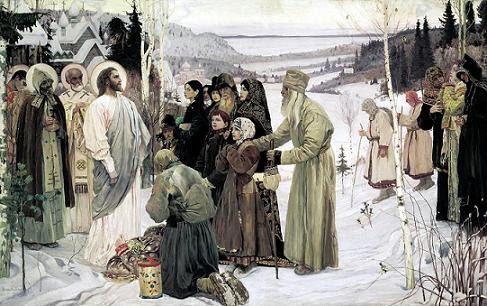





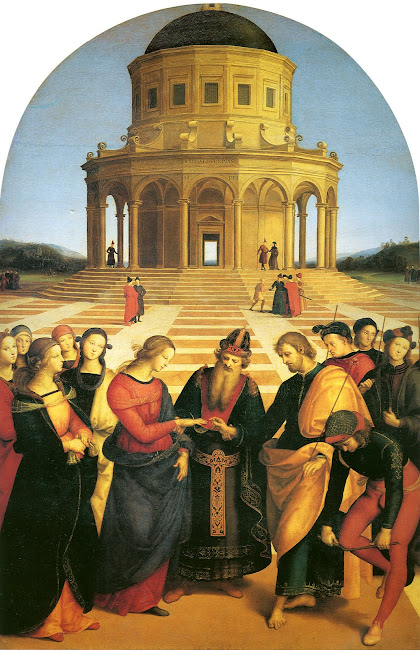
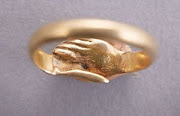
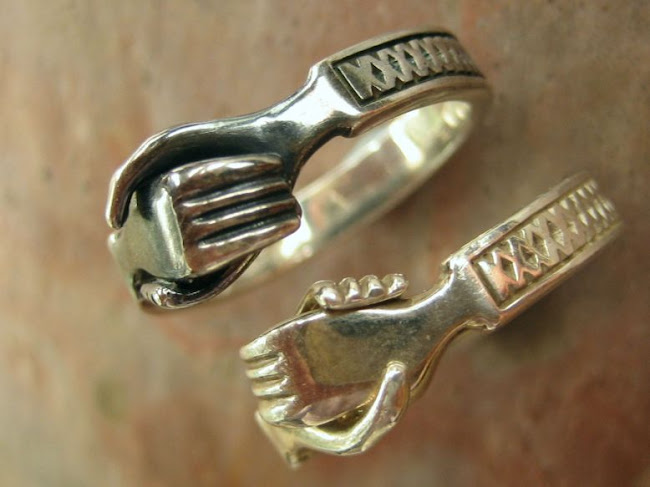
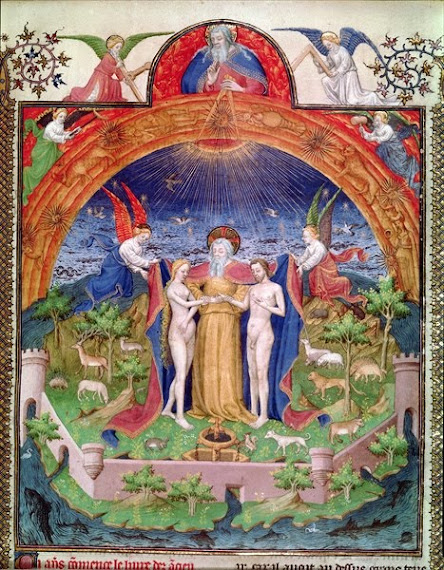

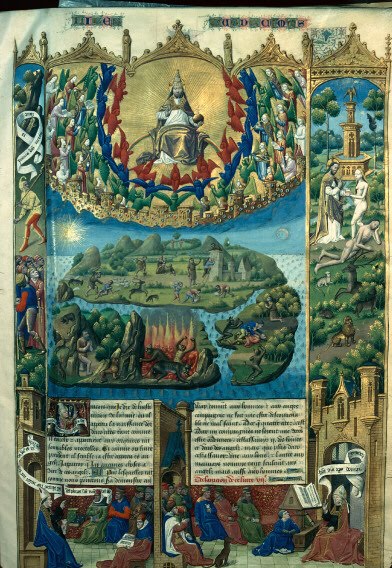
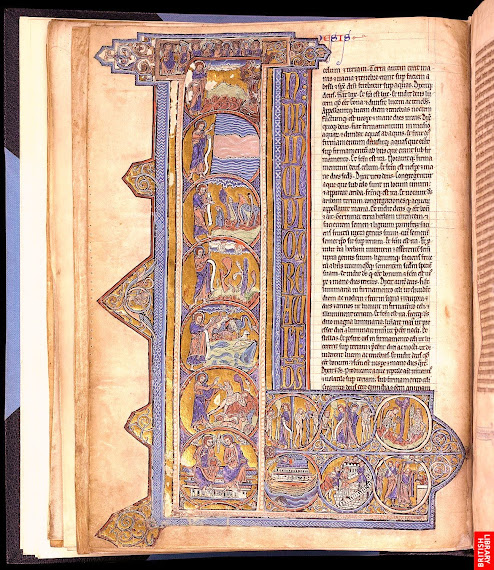



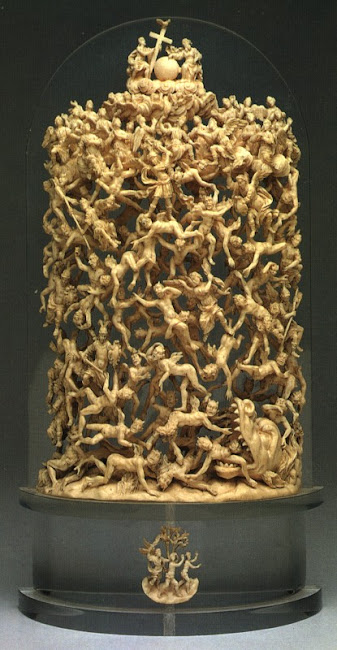
,+France,+Paris,+XVe.jpg)
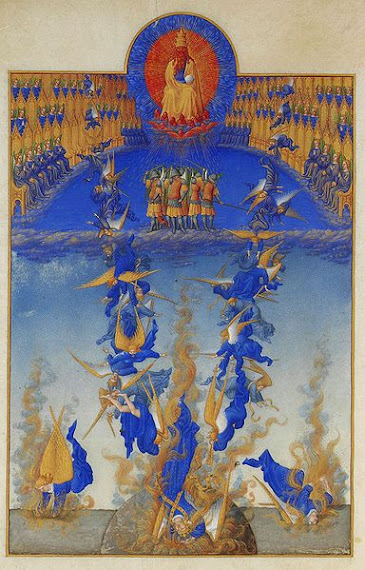,+c.+1410.jpg)






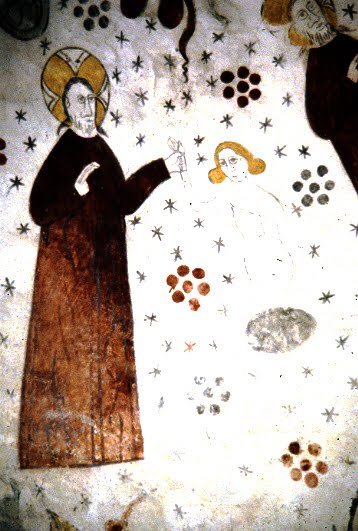++Creation+of+Adam.jpg)
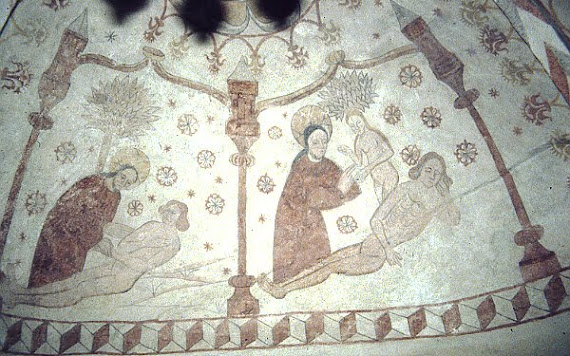++Creation+of+Adam+and+Eve..jpg)
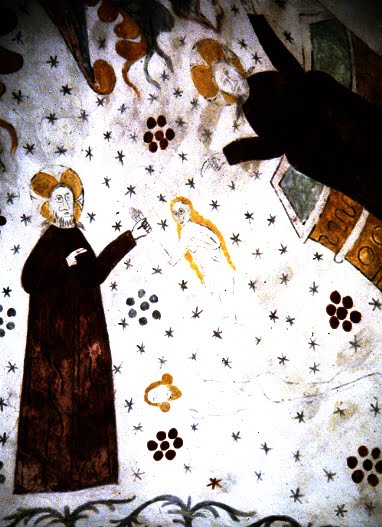++Creation+of+Eve.jpg)
+Creation+of+Adam+hand+clasp+with+God+-+1425-52+Bronze+door+to+Baptistry+-+Florence.jpg)
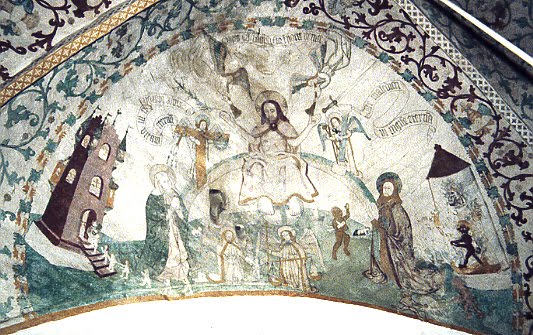++Judgment.jpg)
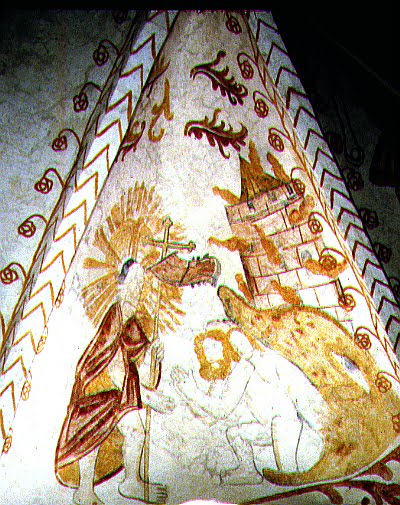++Harrowing+of+Hell..jpg)
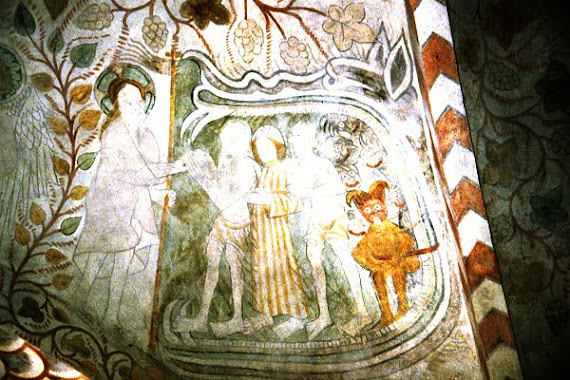++Harrowing+of+Hell..jpg)

++Marriage+of+Adam+and+Eve.jpg)
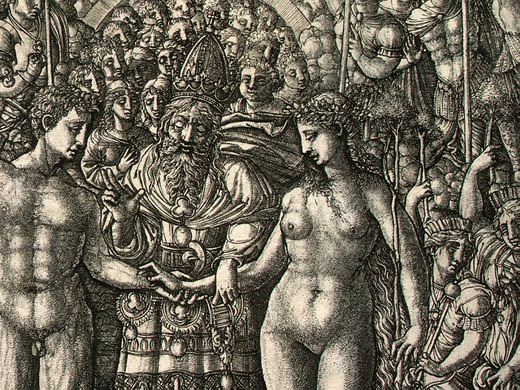
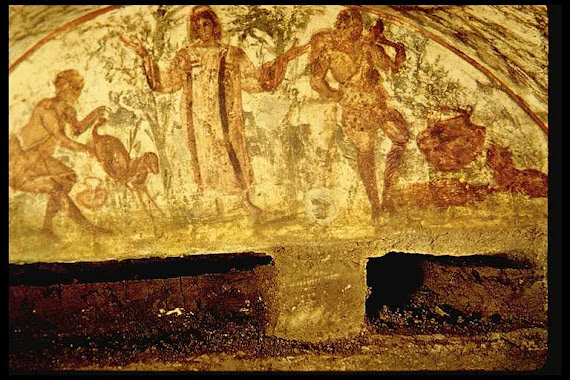
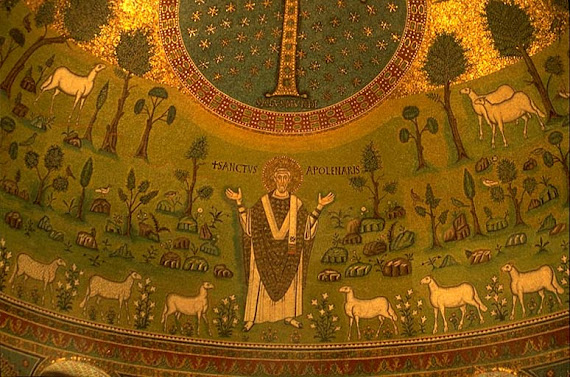
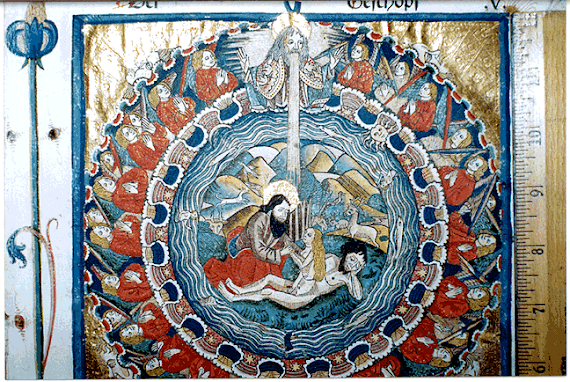


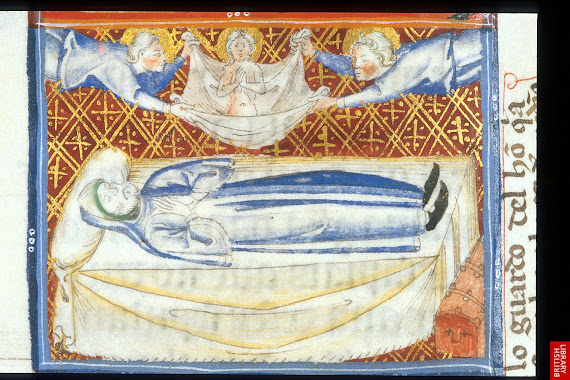
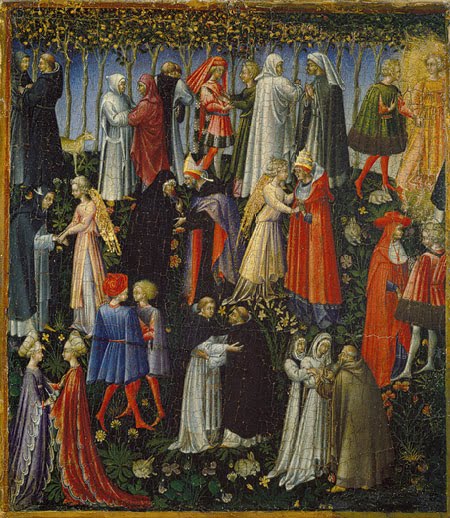
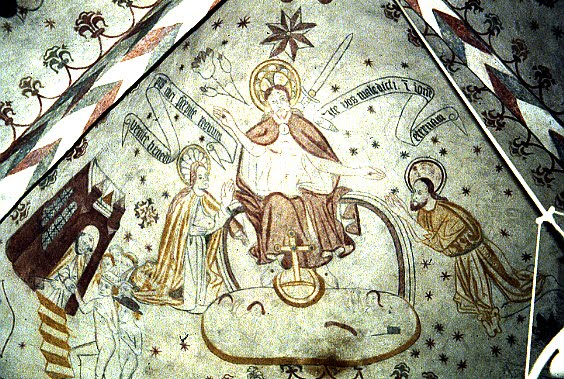++Judgment.jpg)
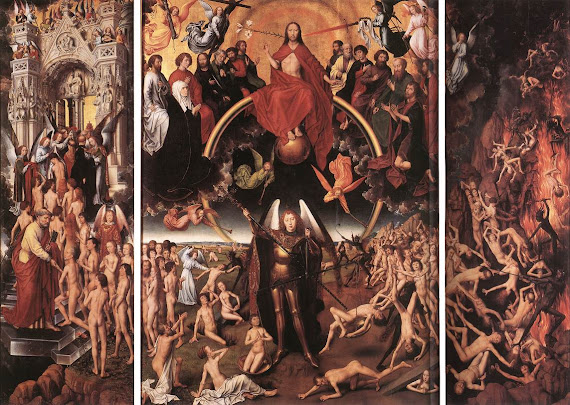
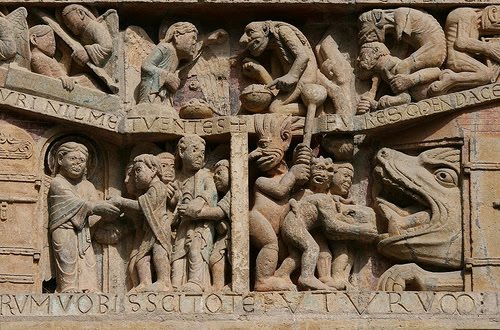
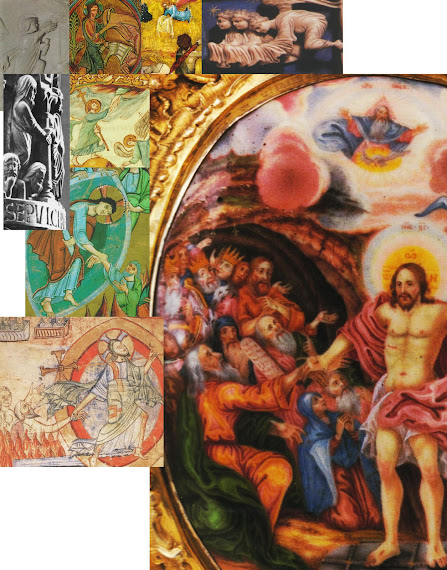

+Harrowing+of+Hell..jpg)






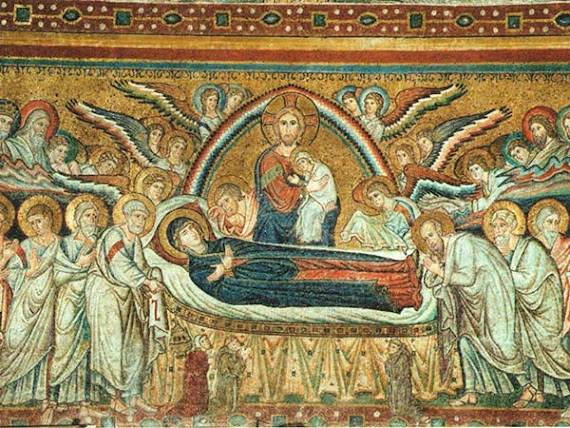
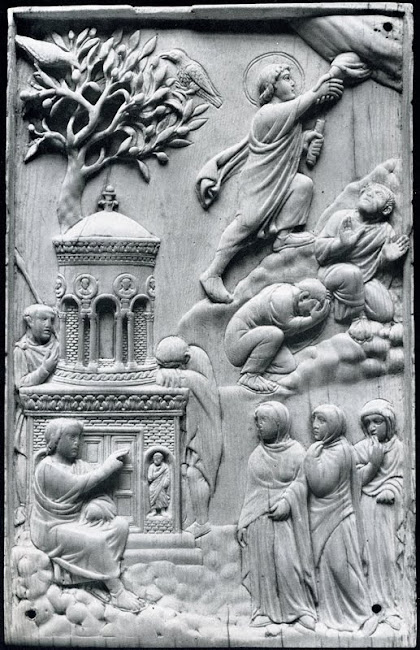



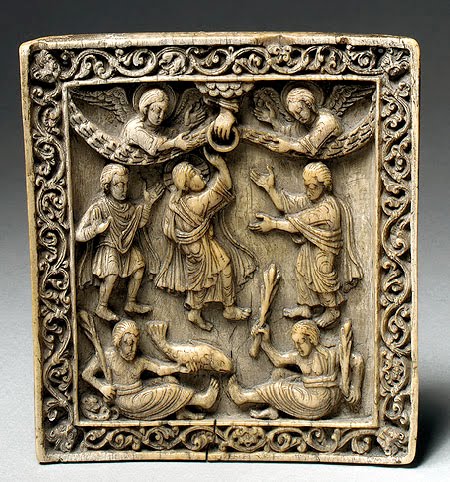





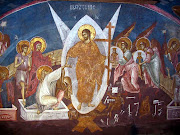




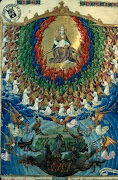













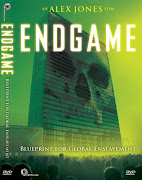











No comments:
Post a Comment